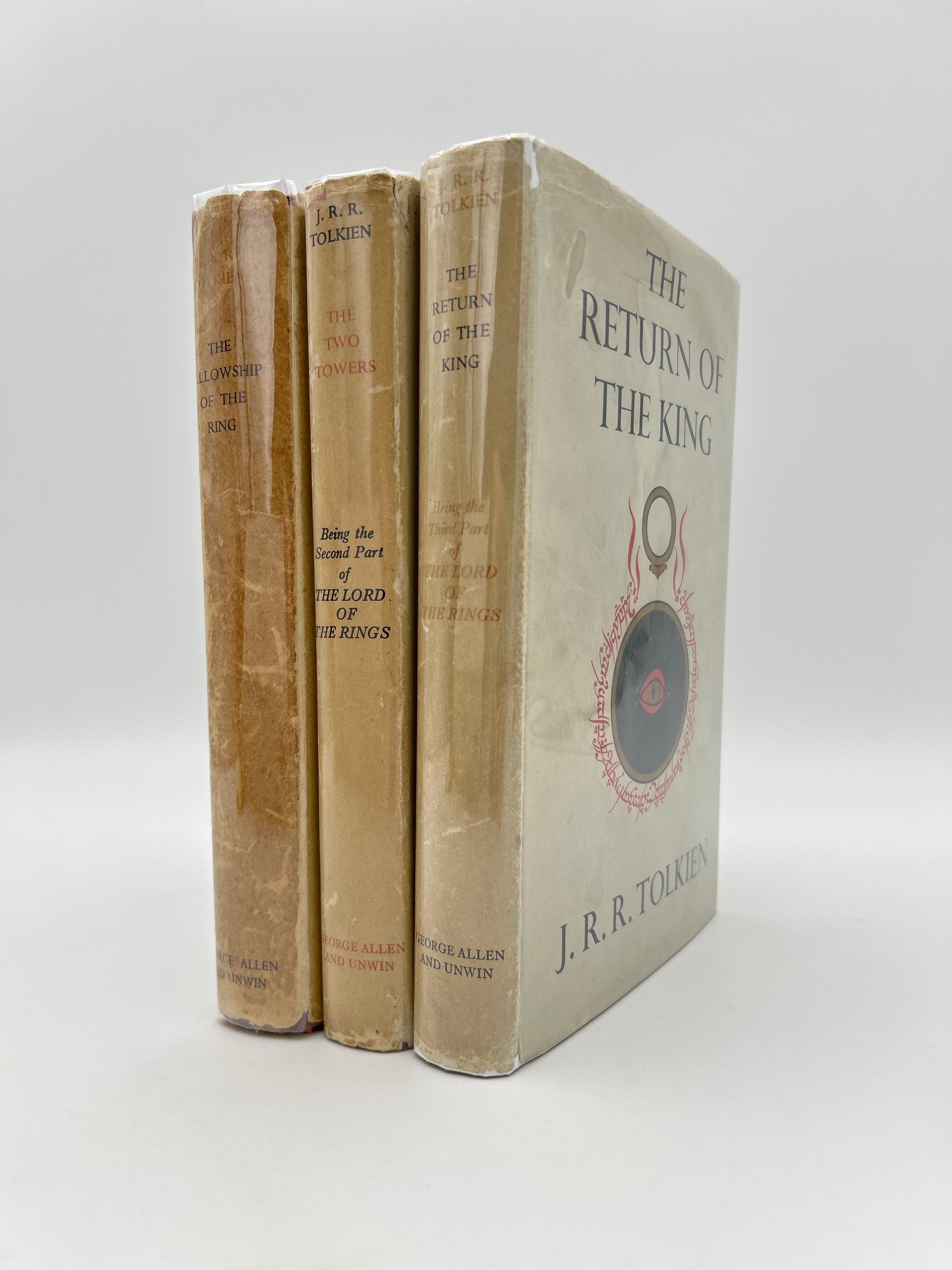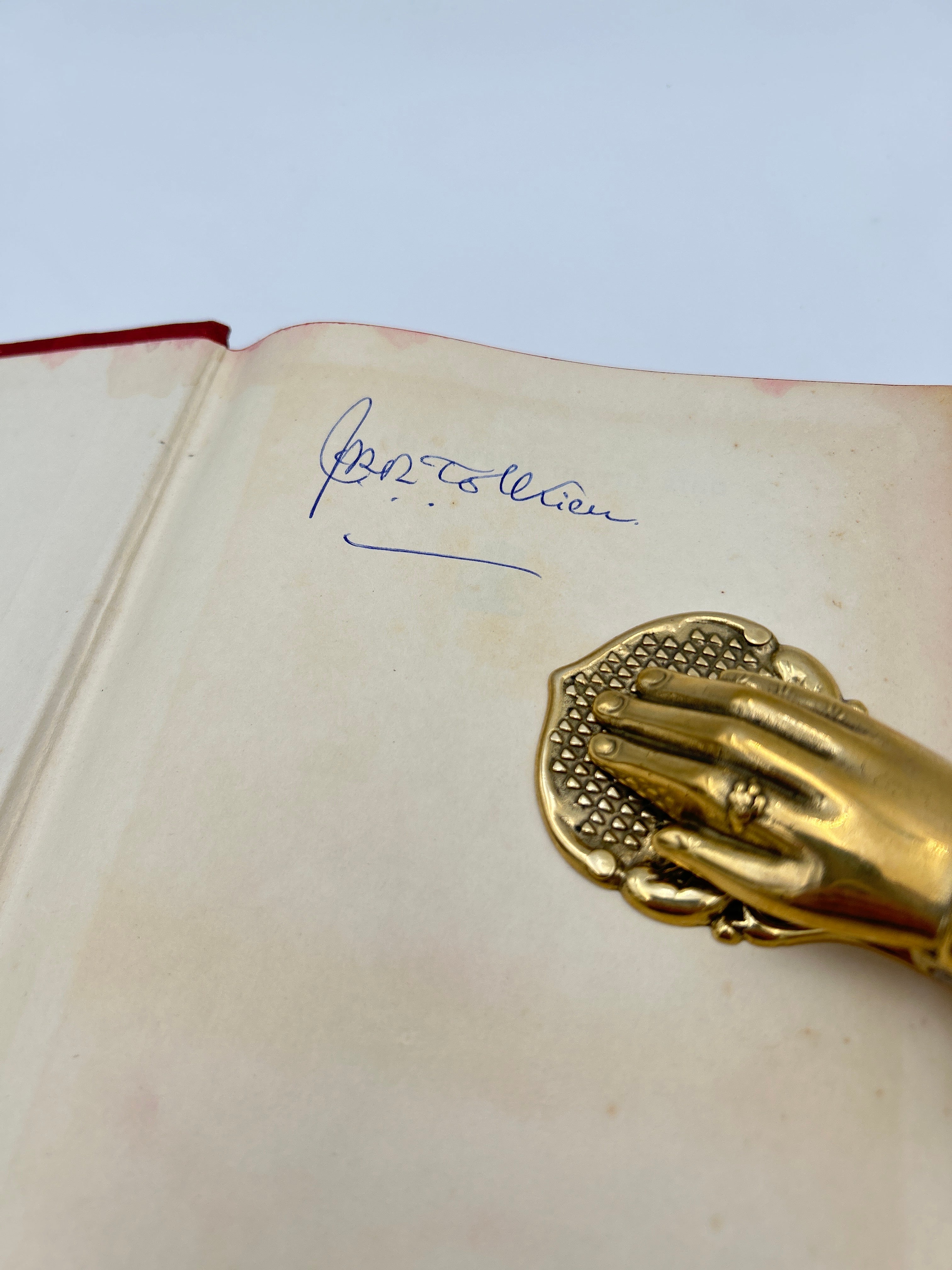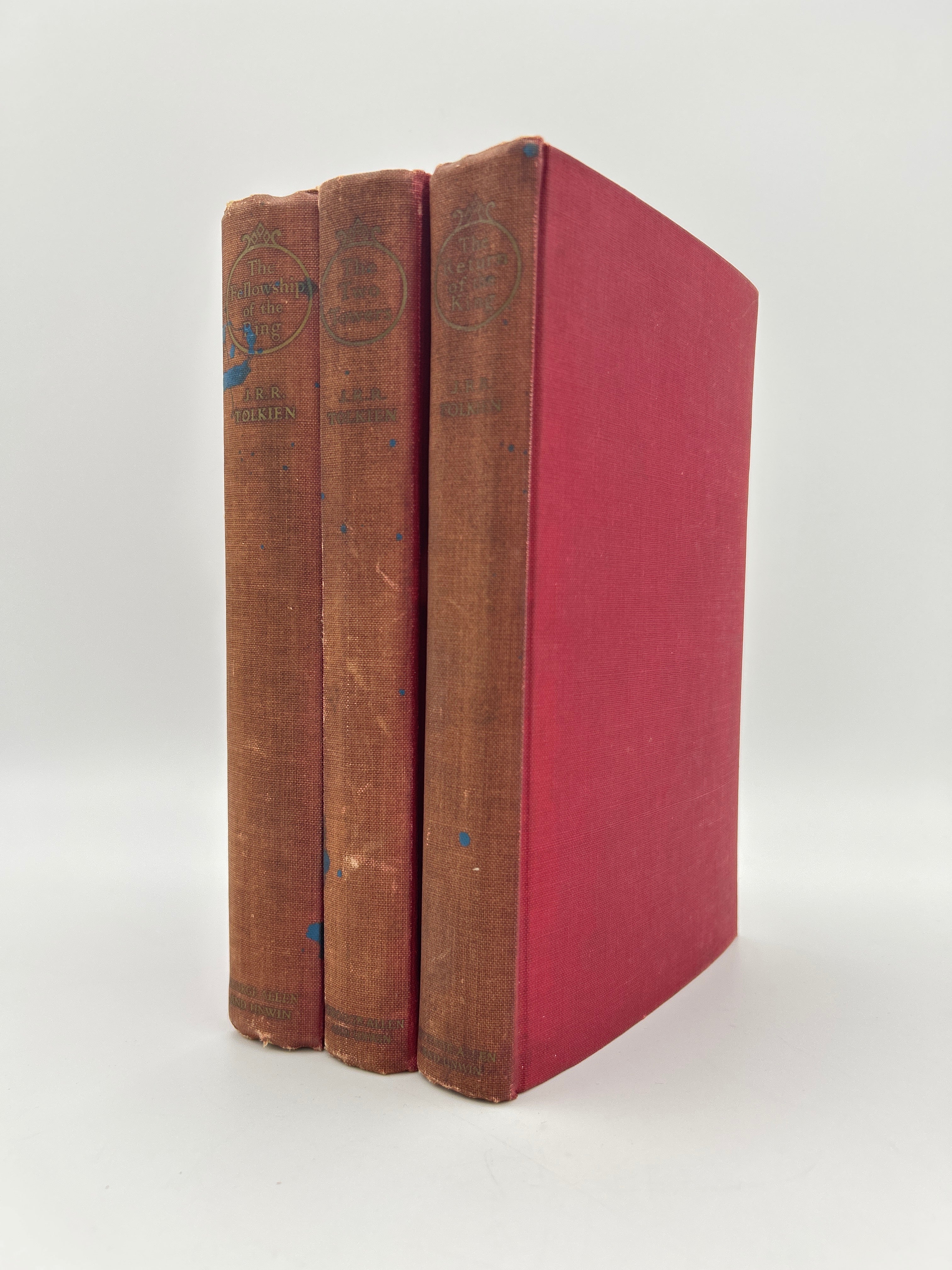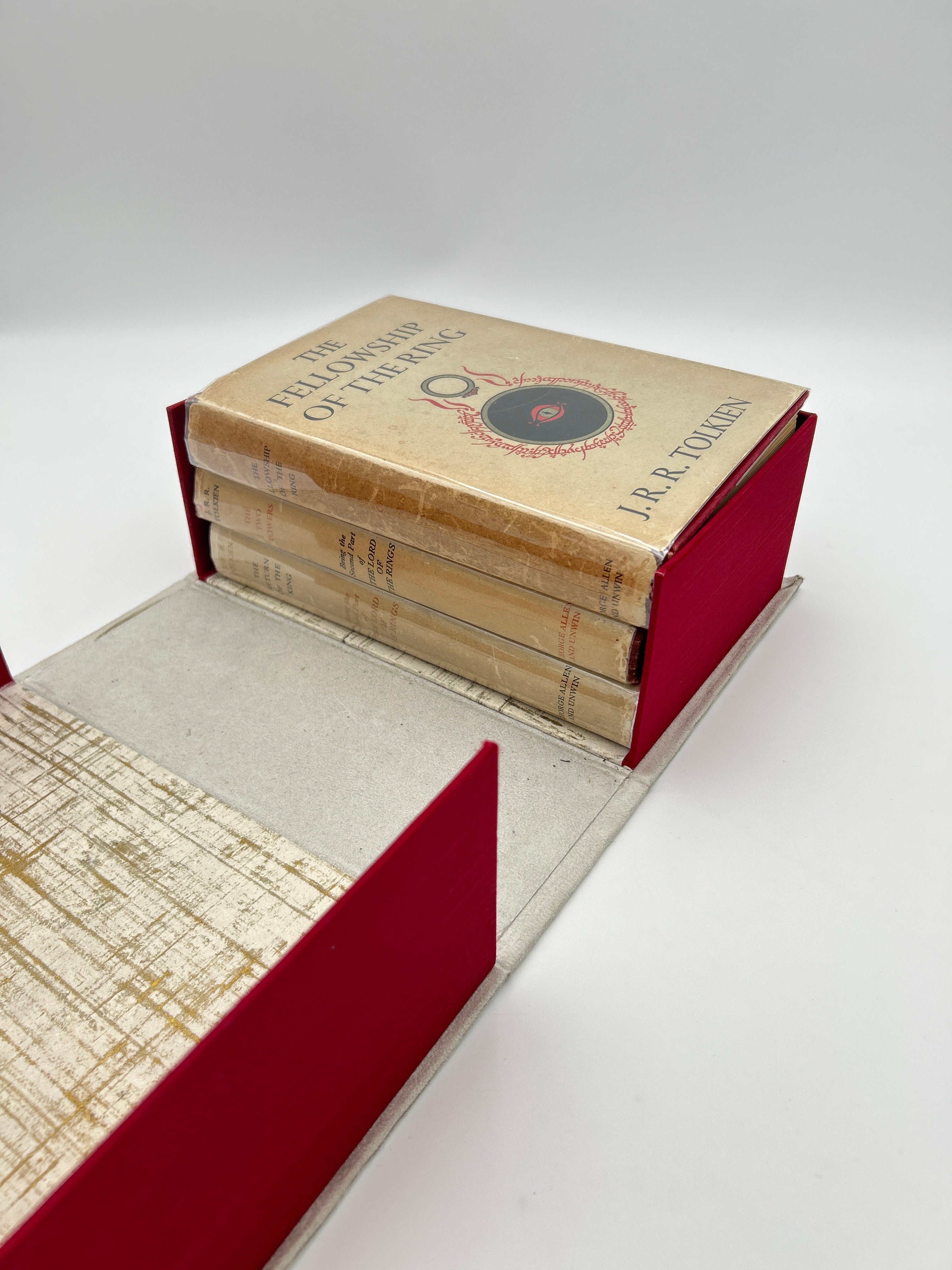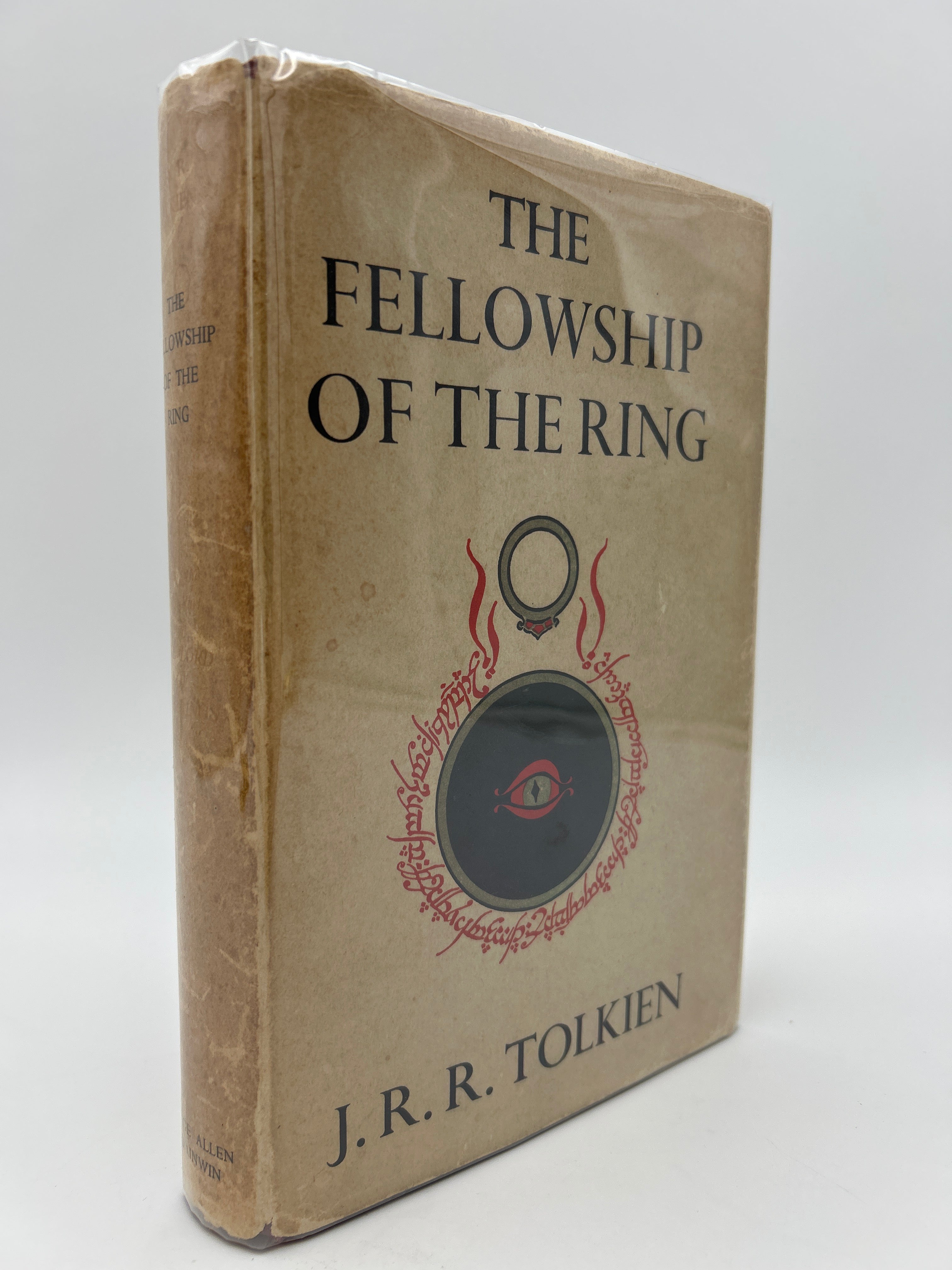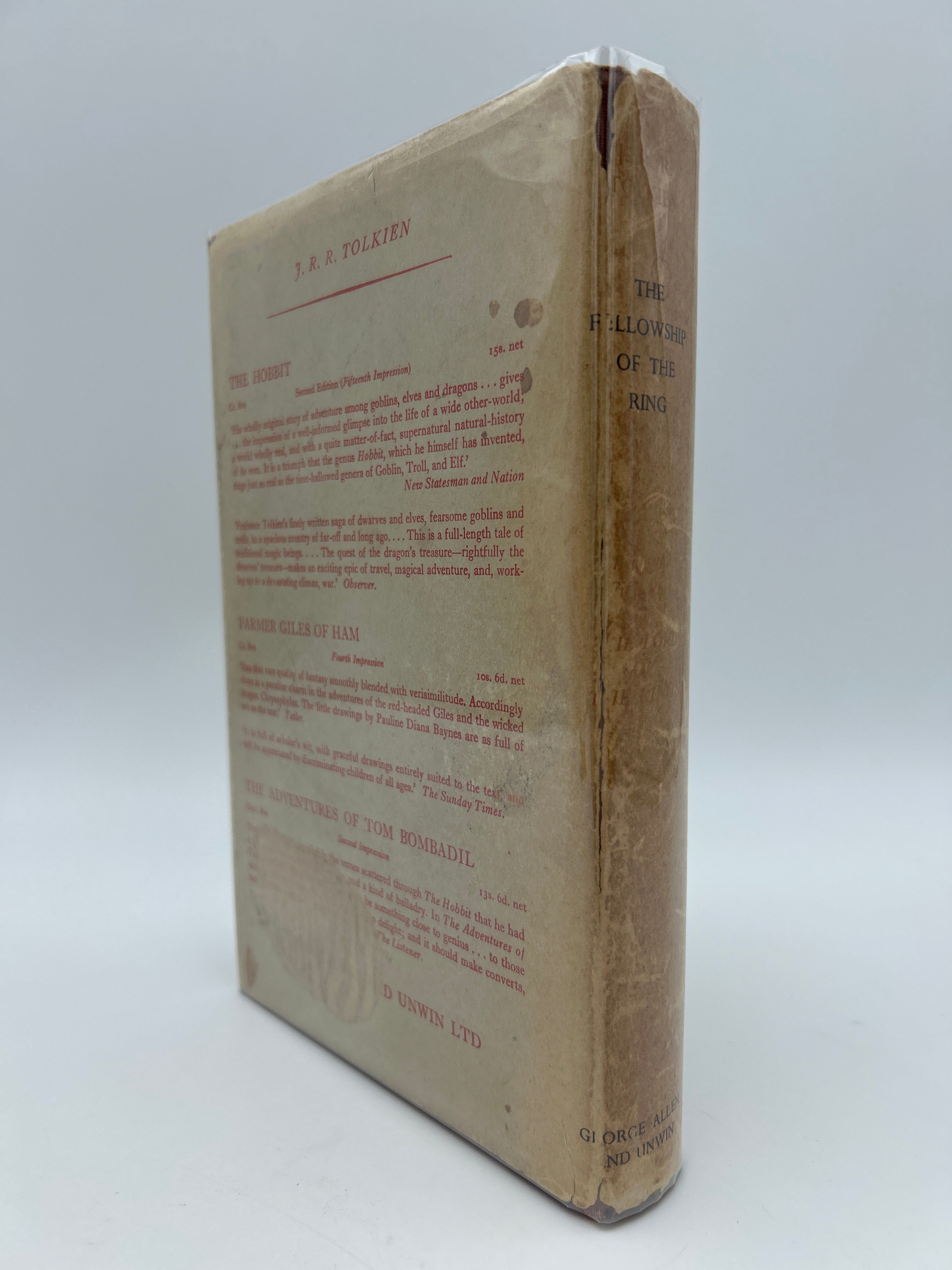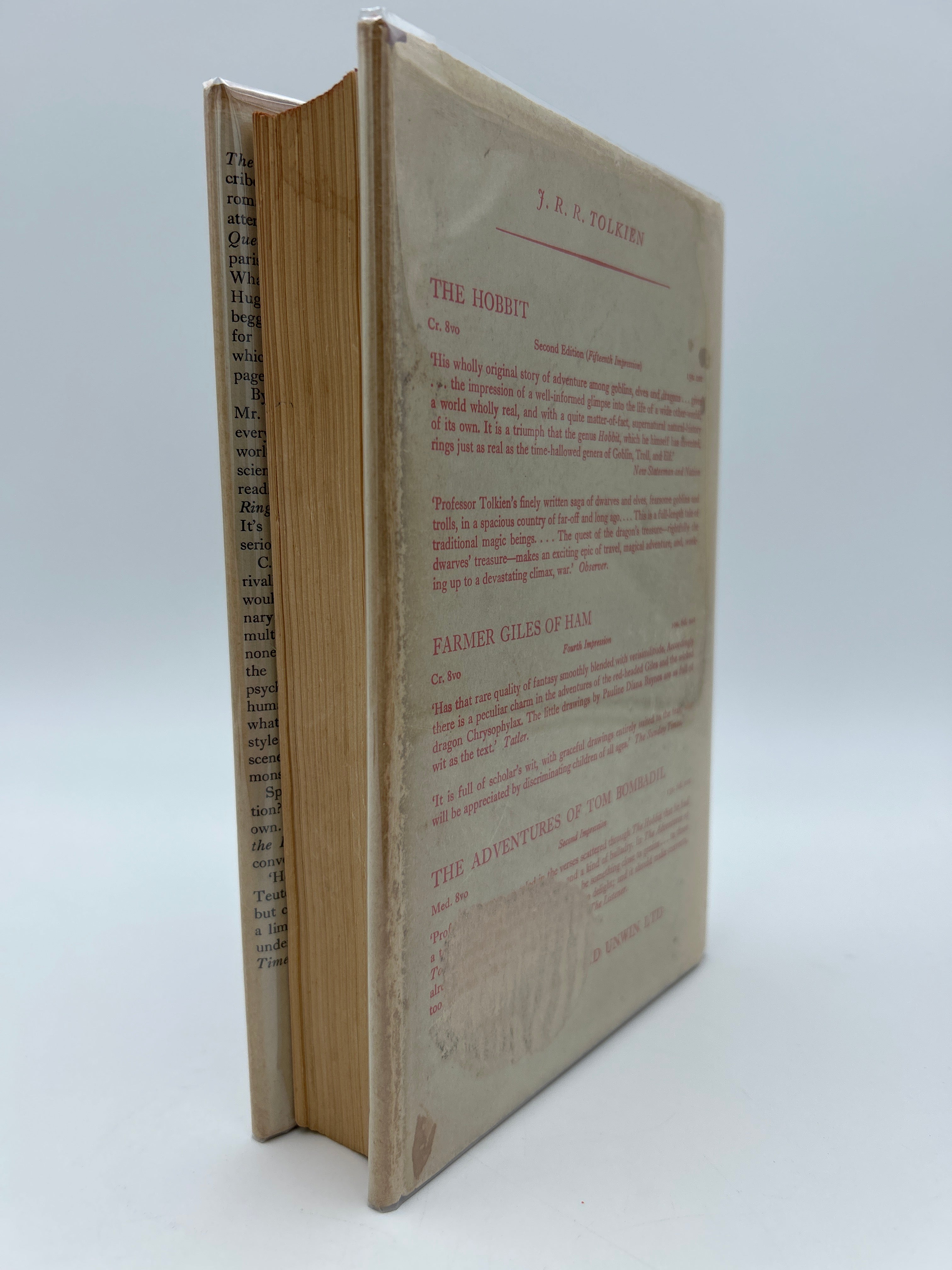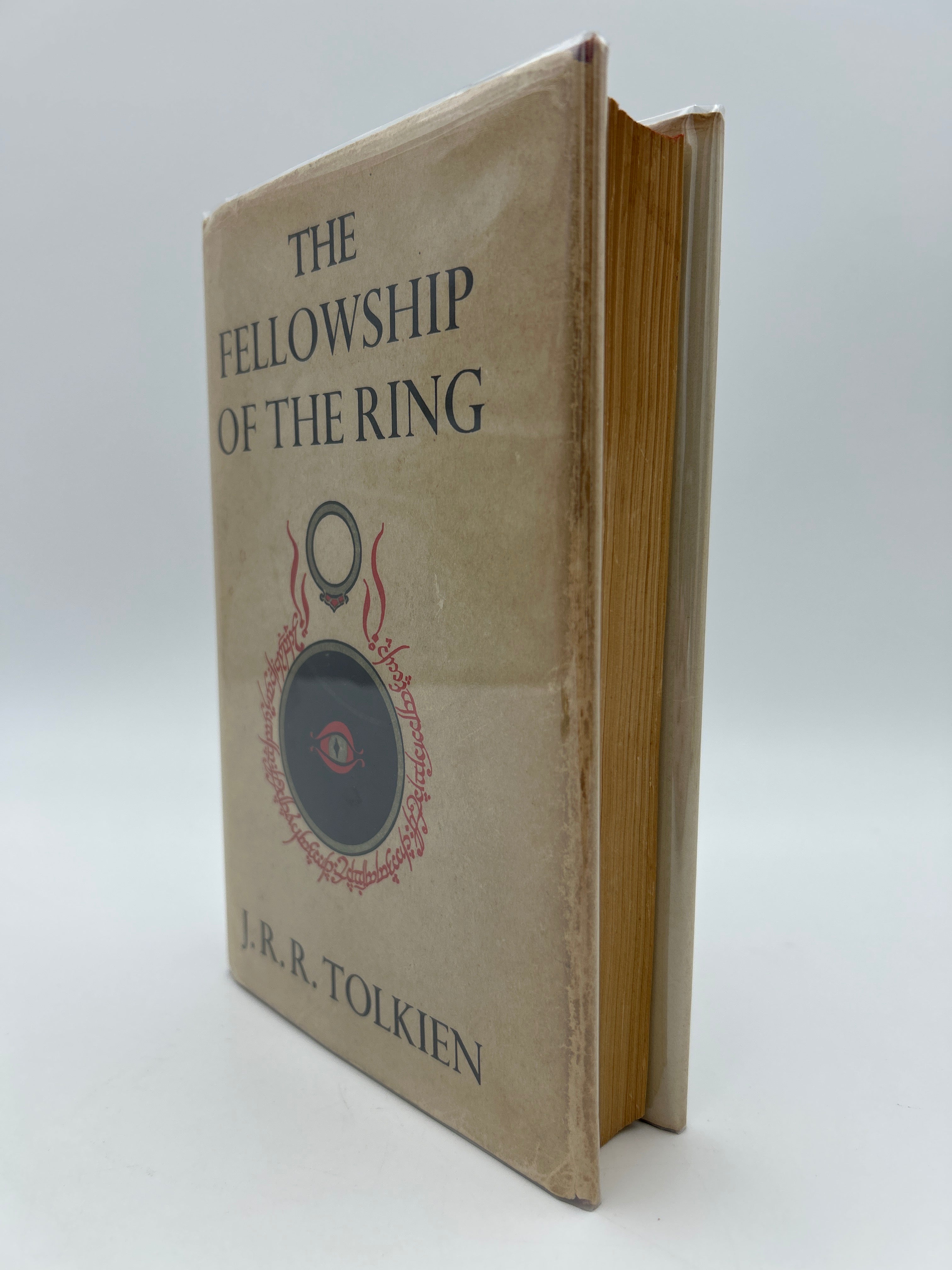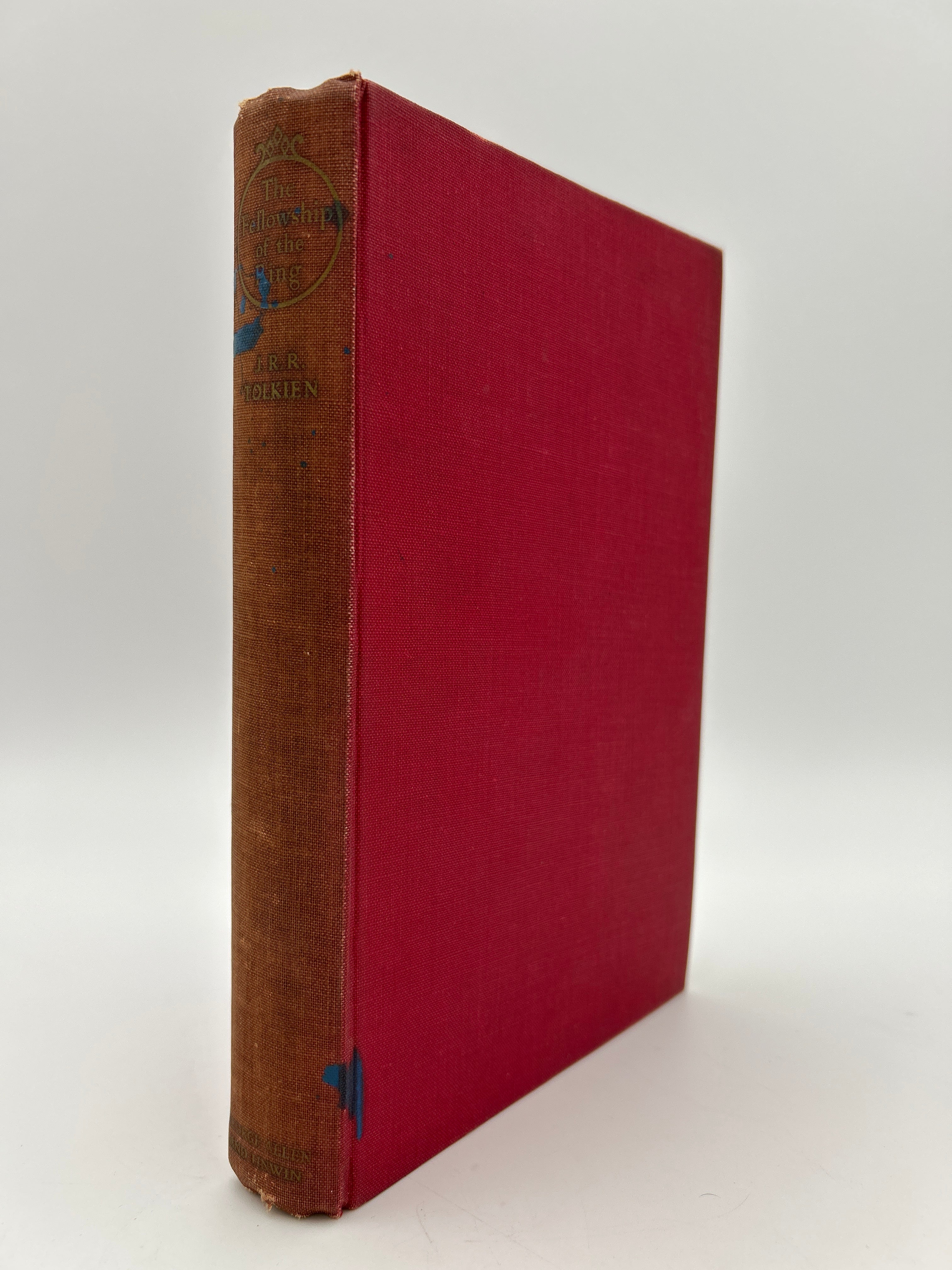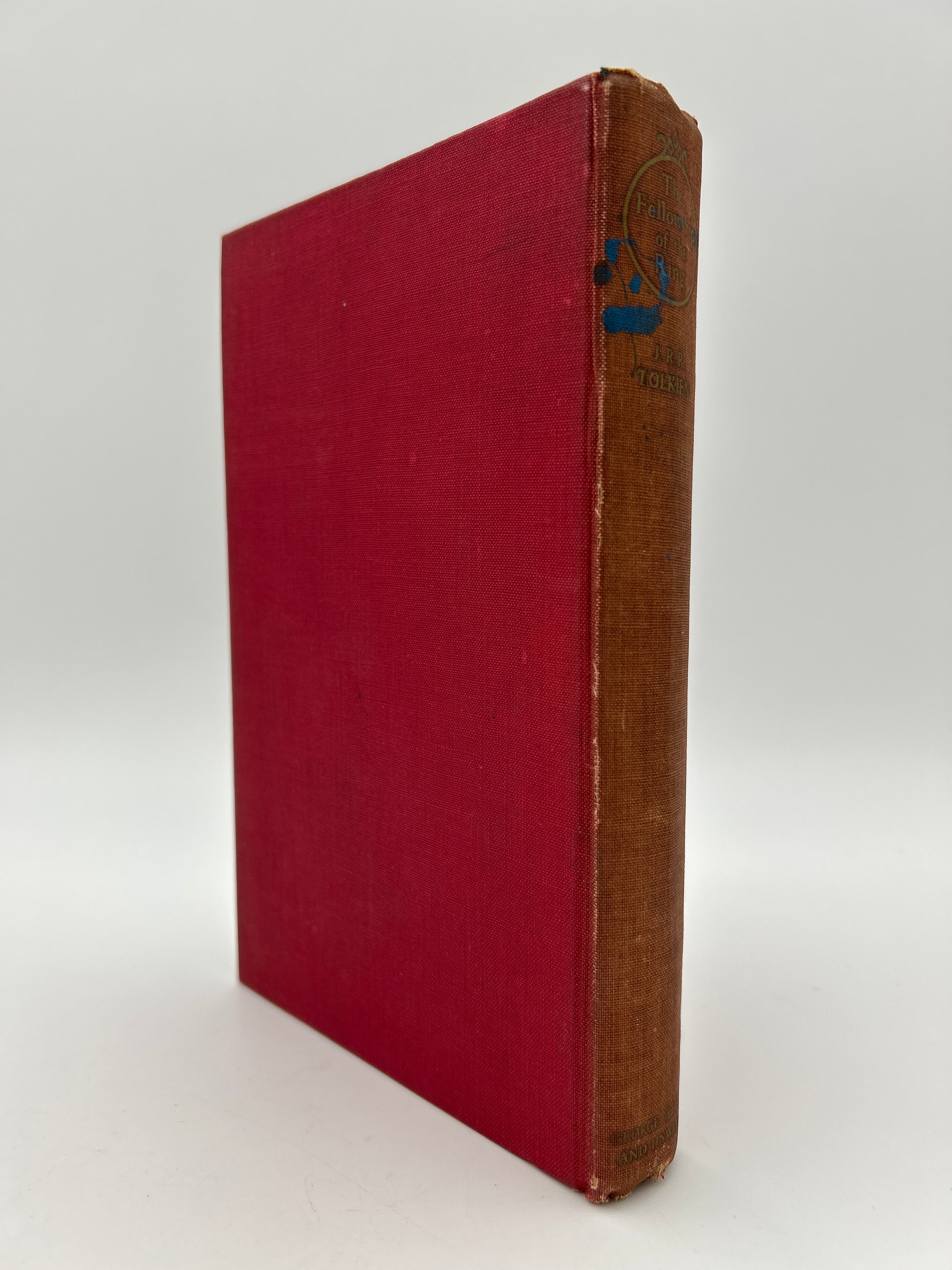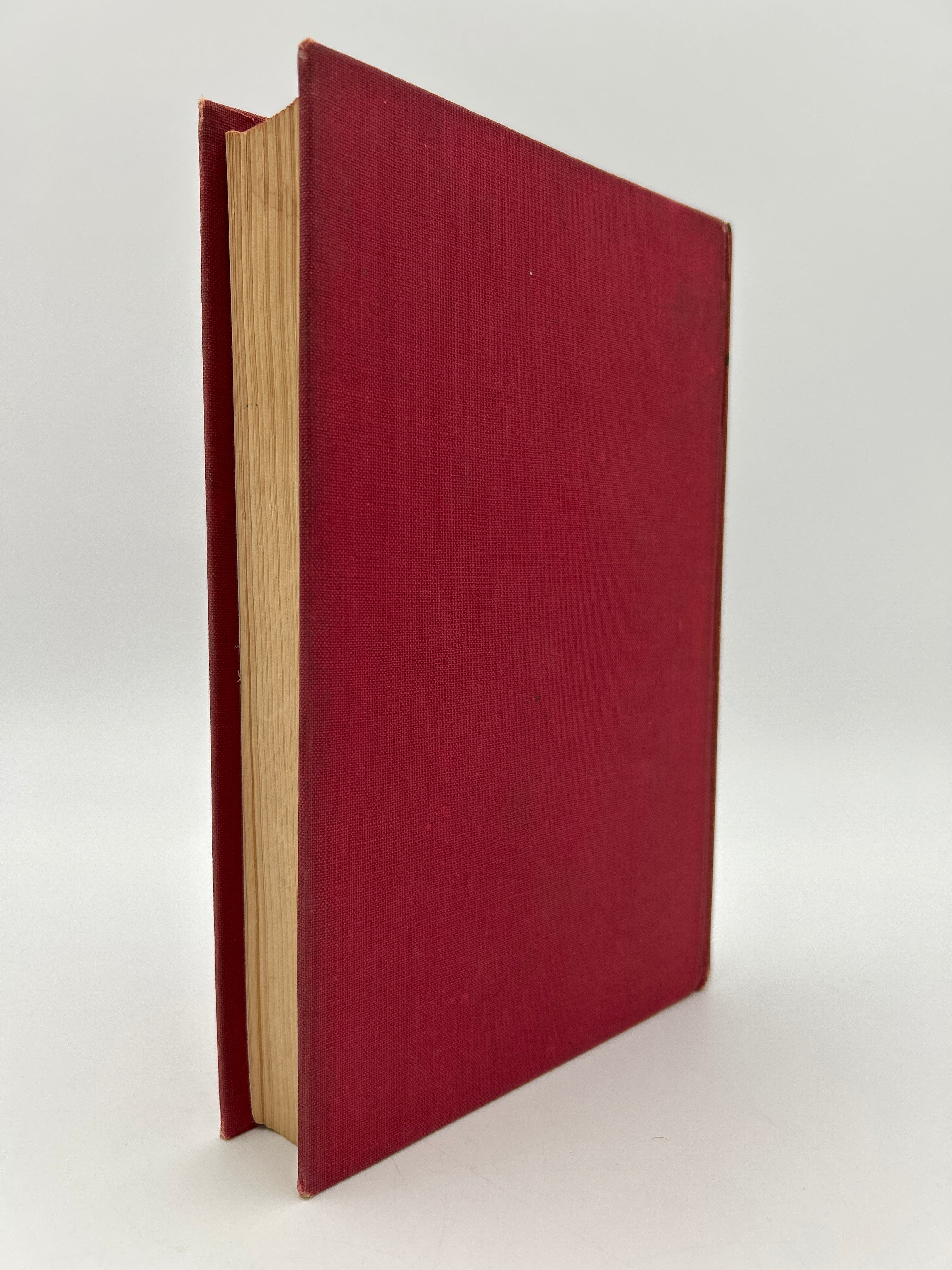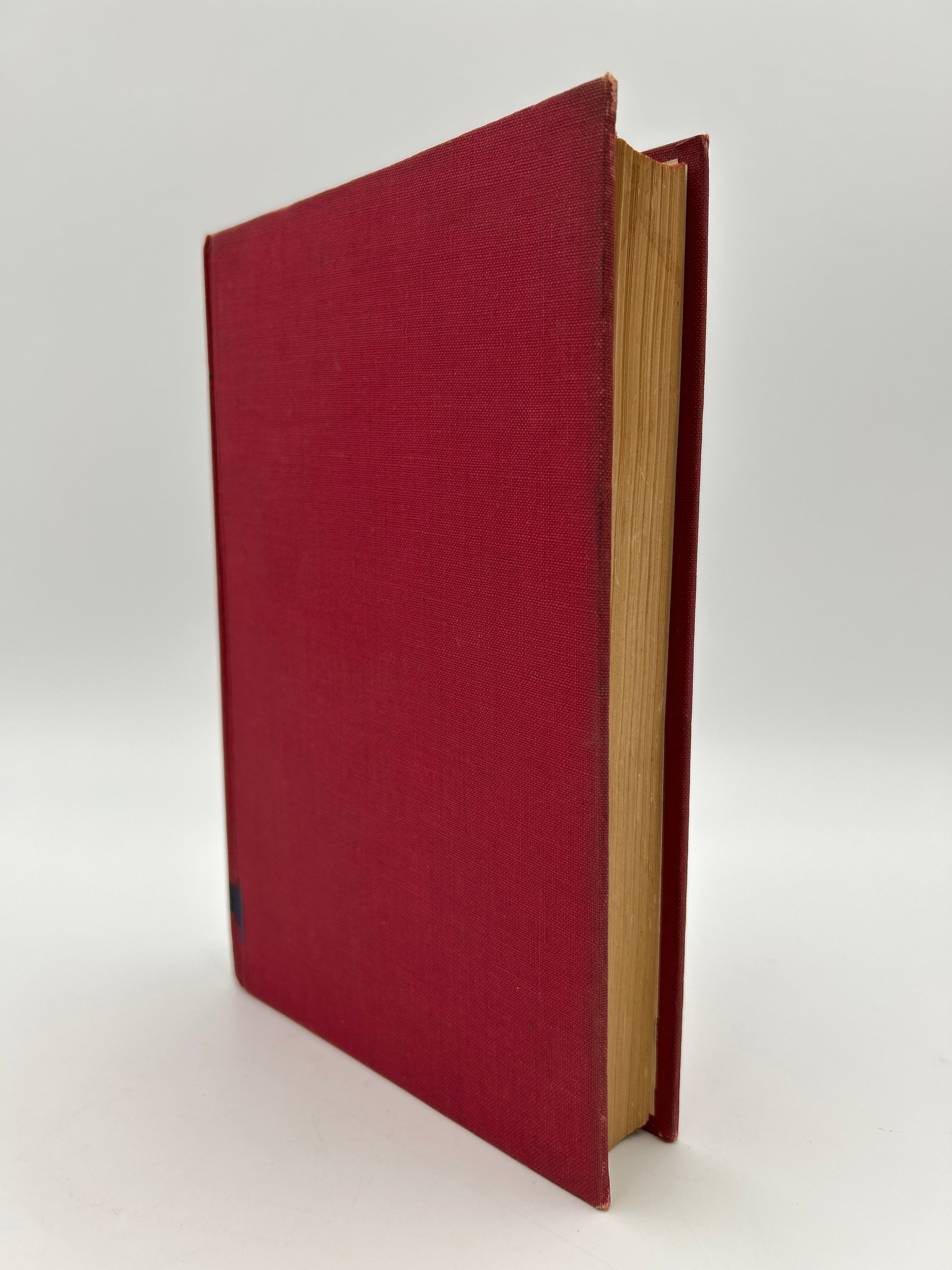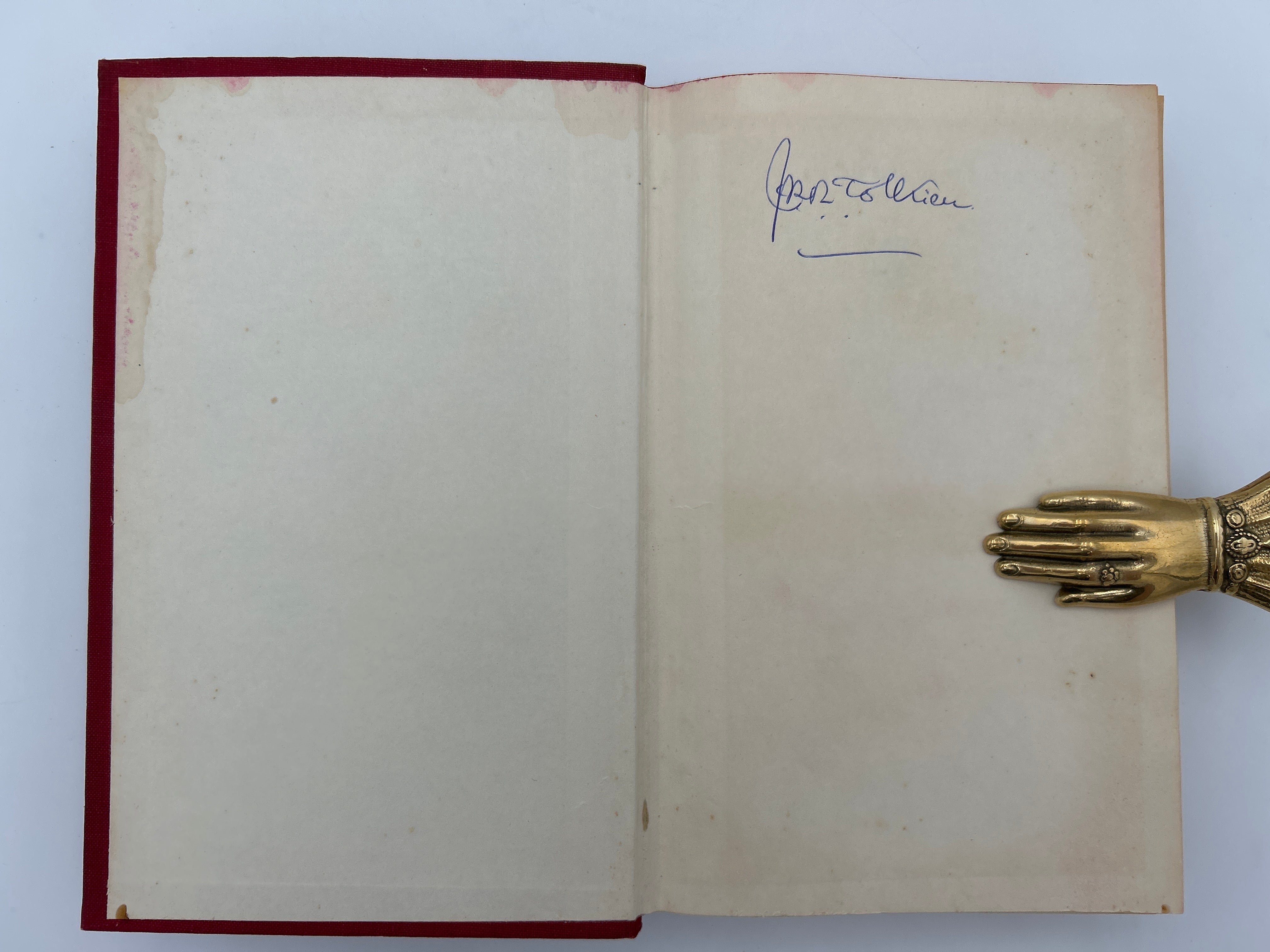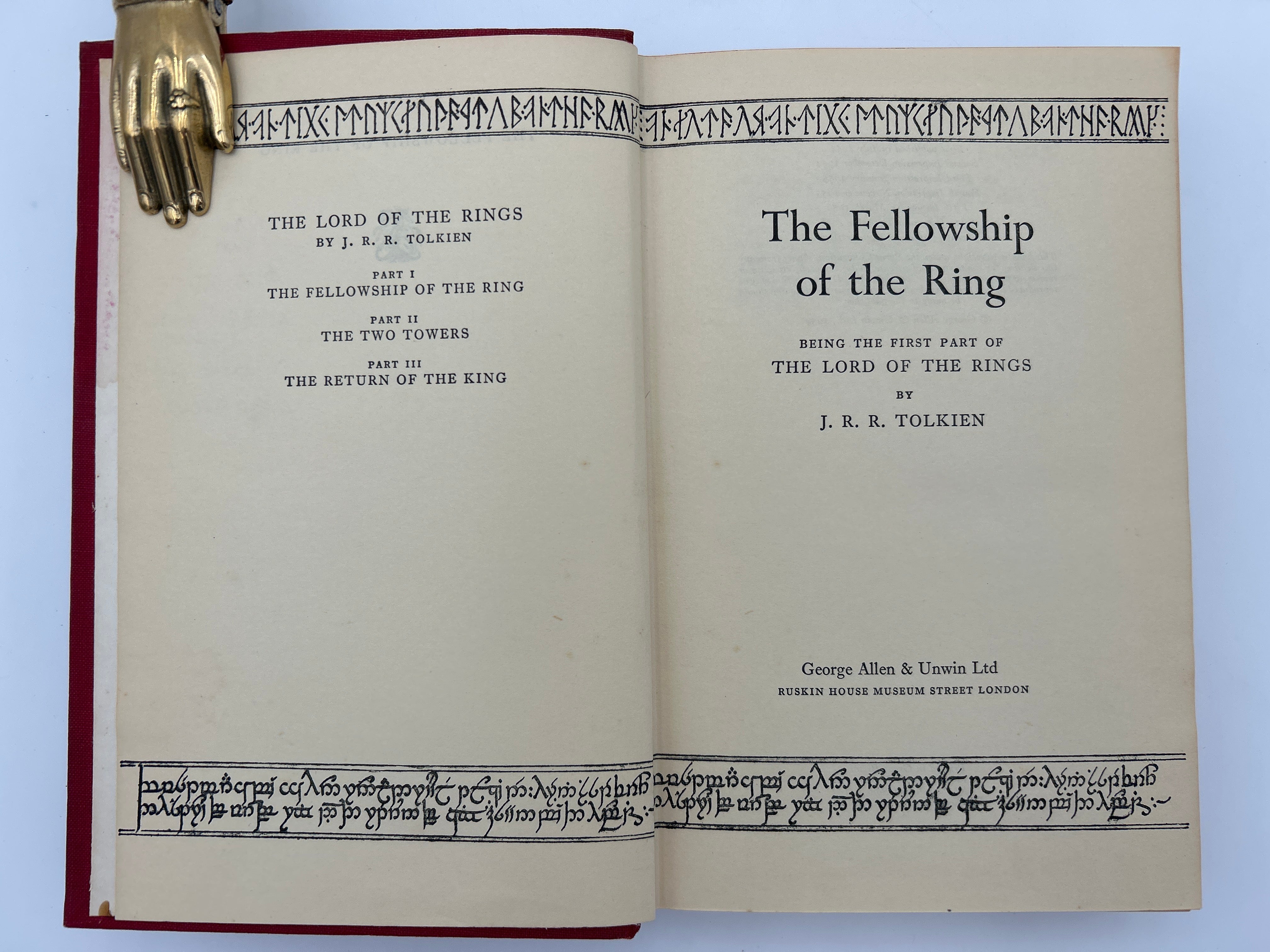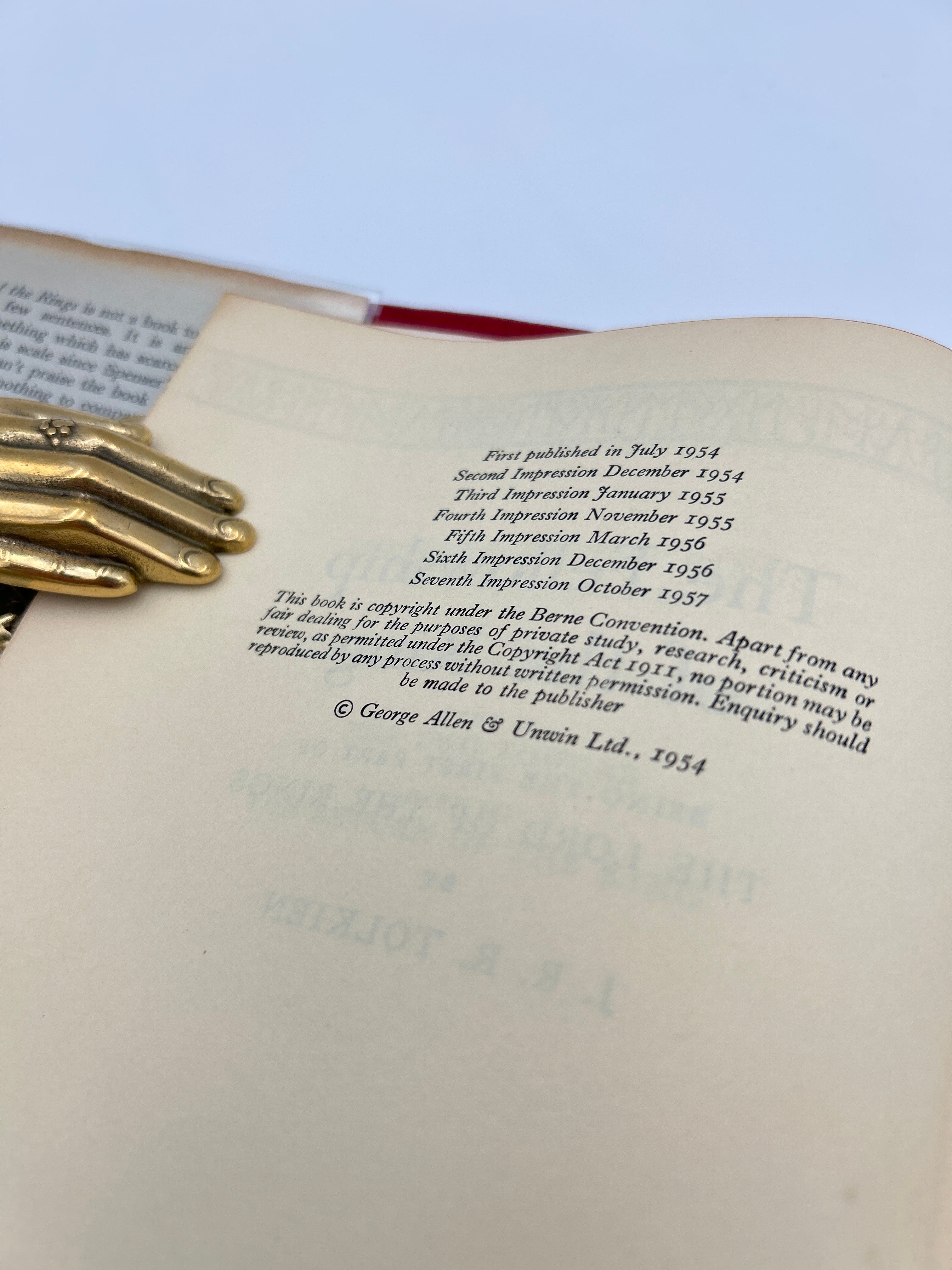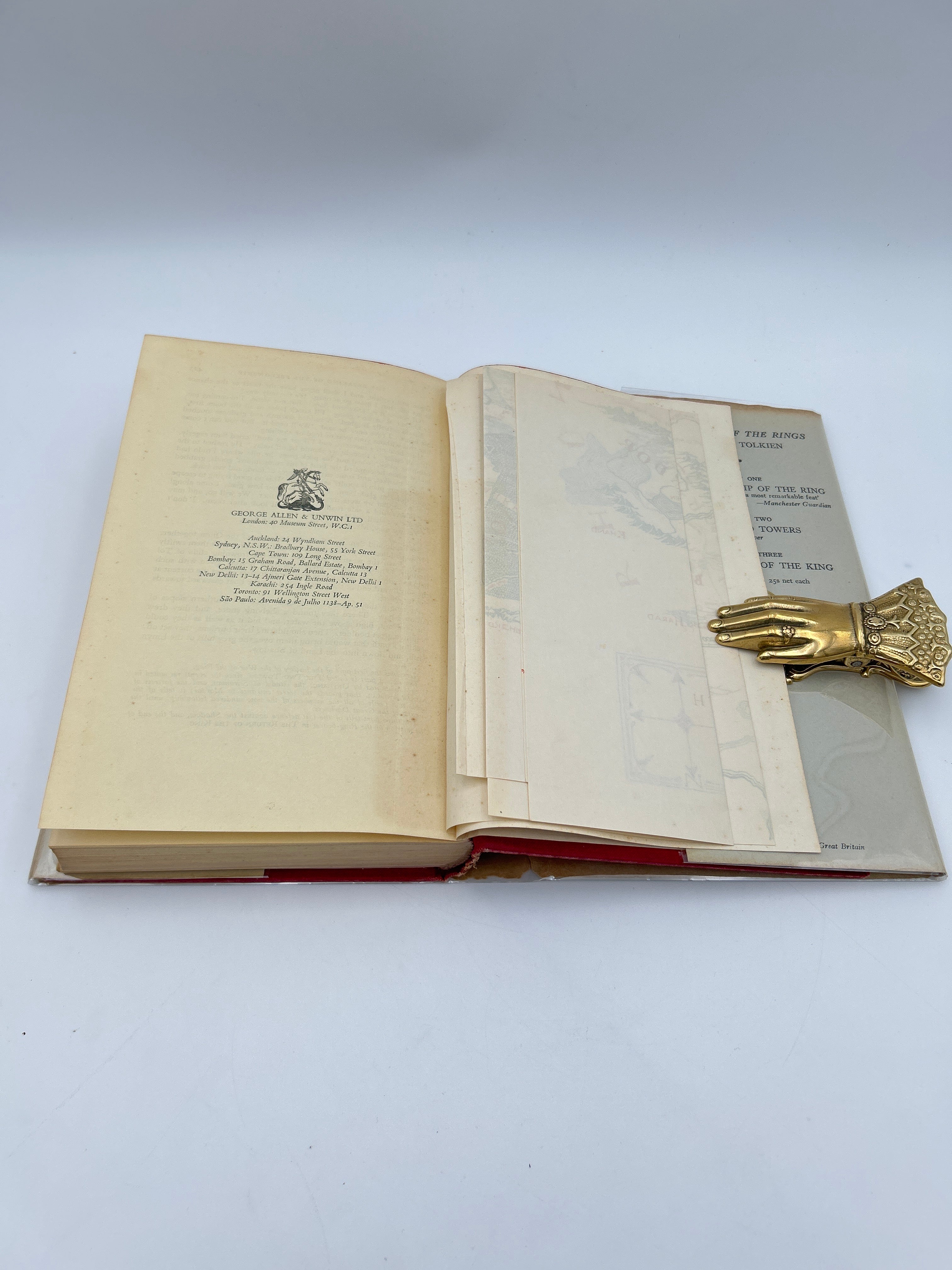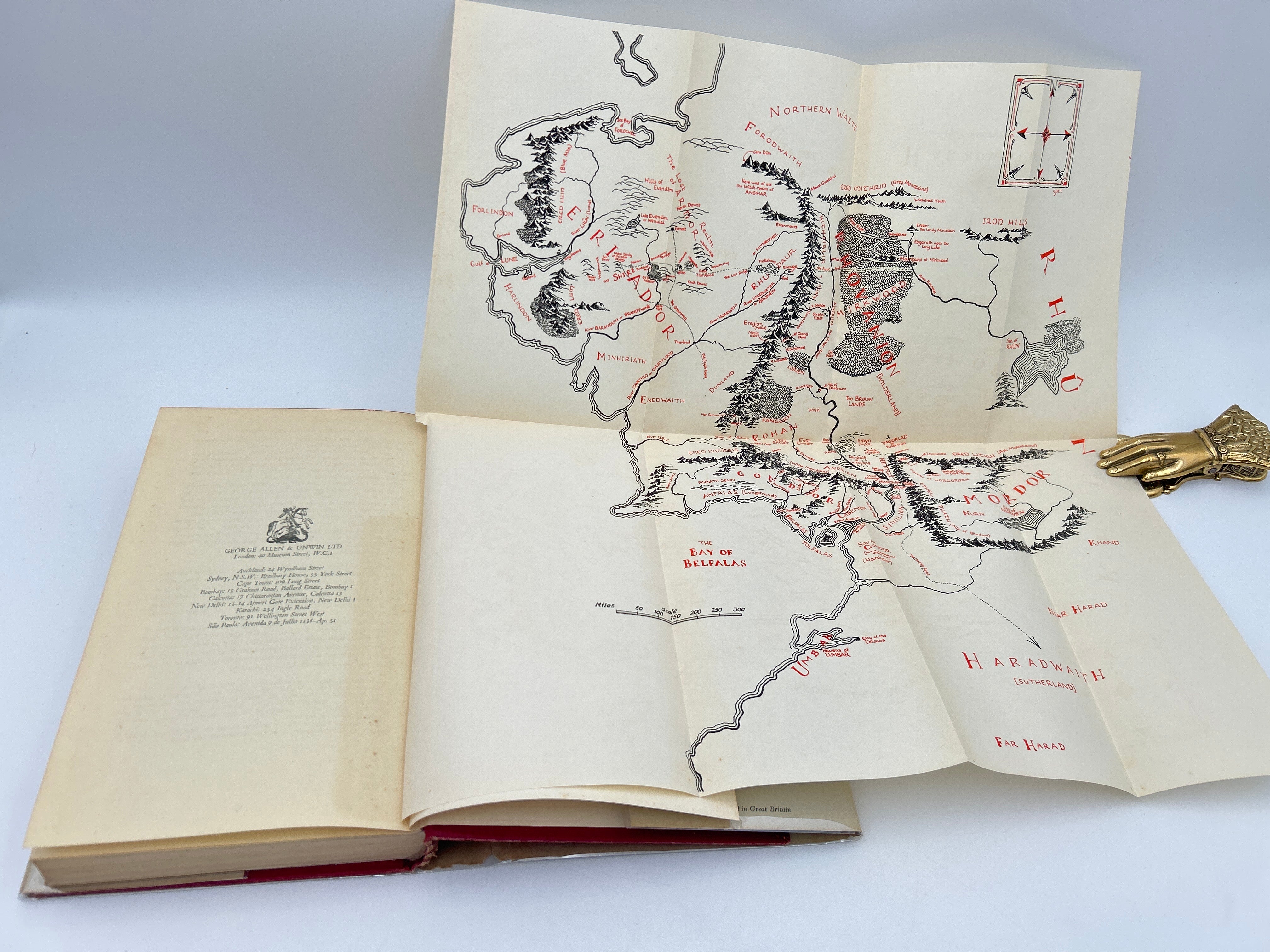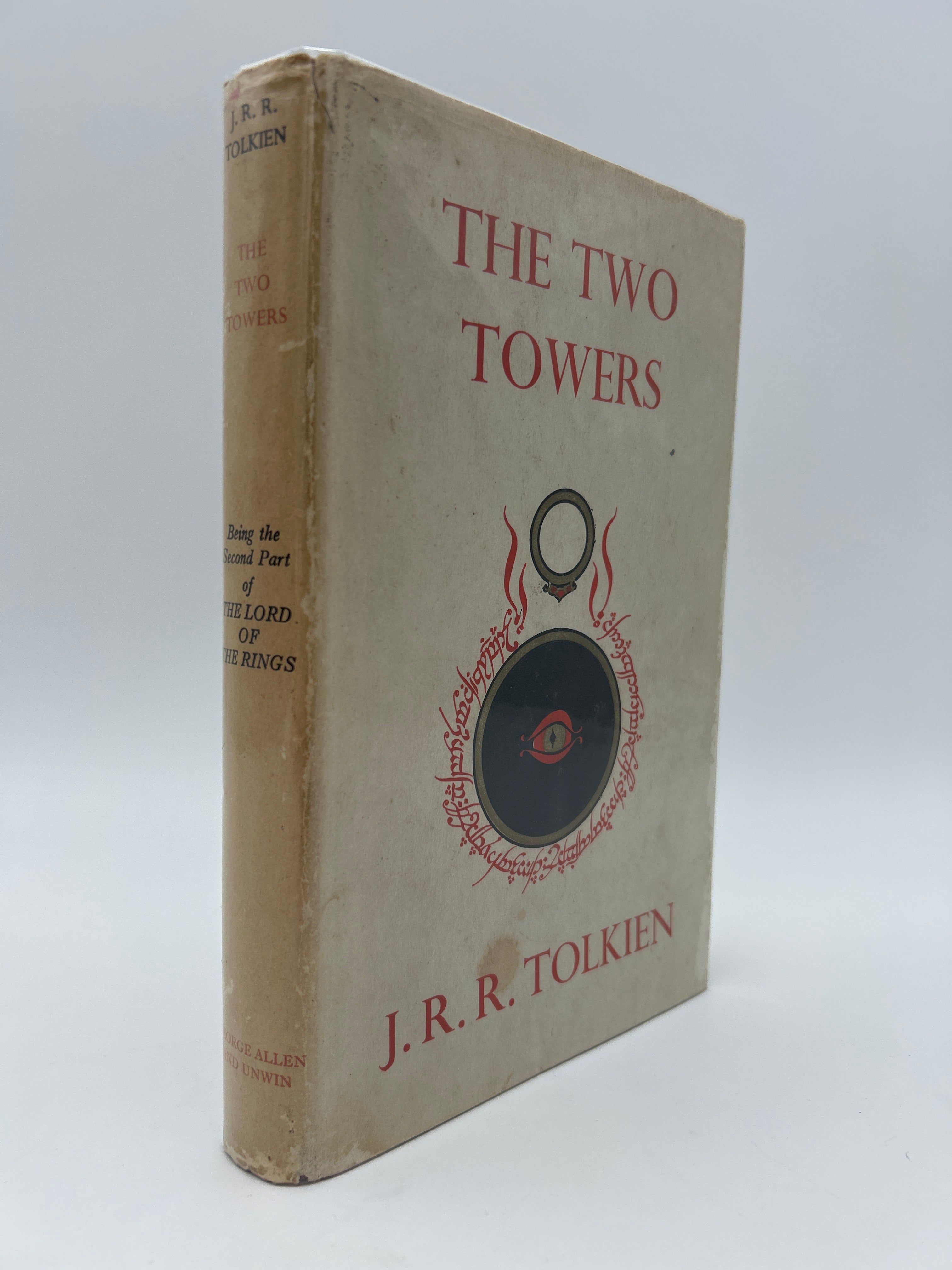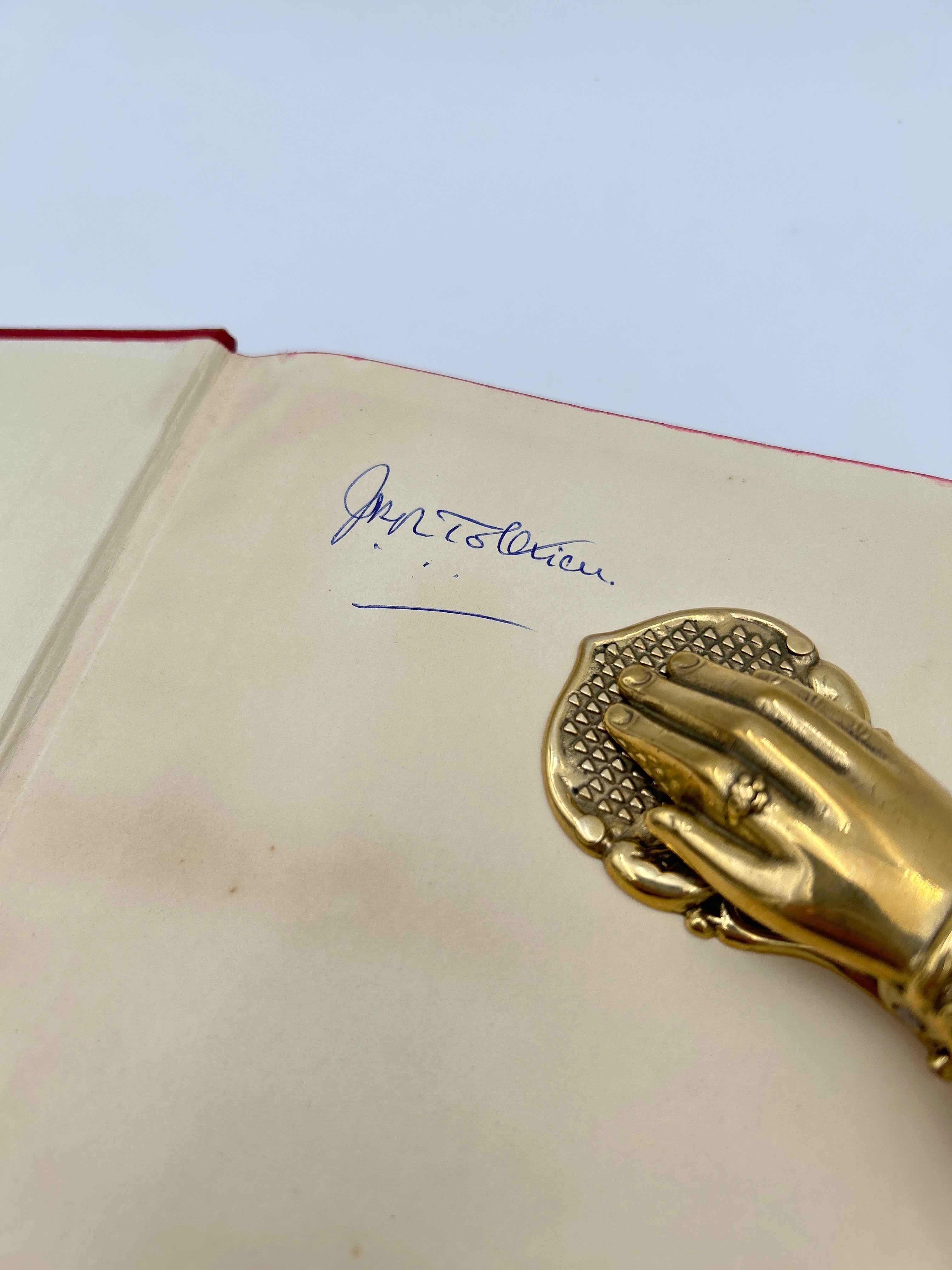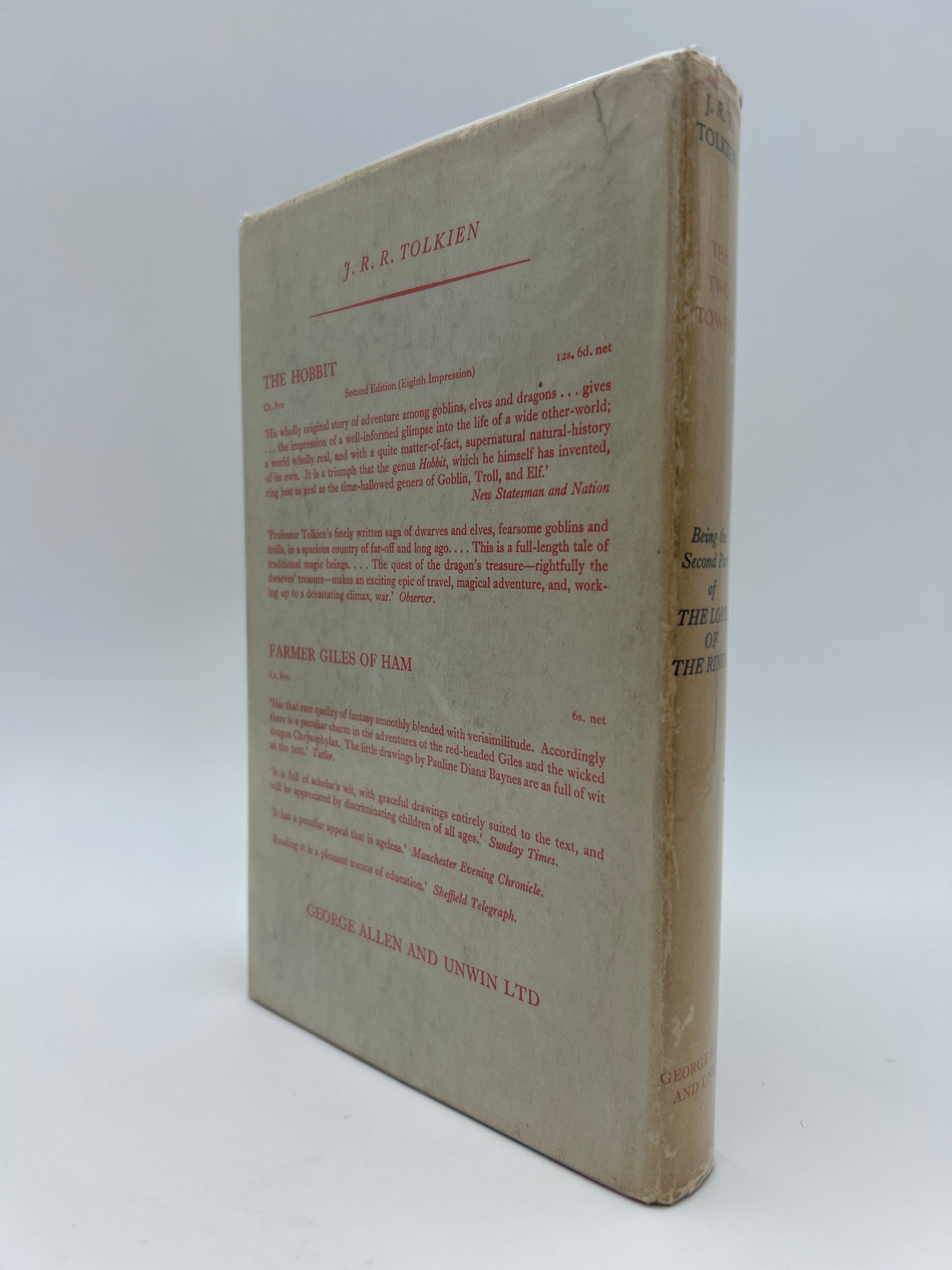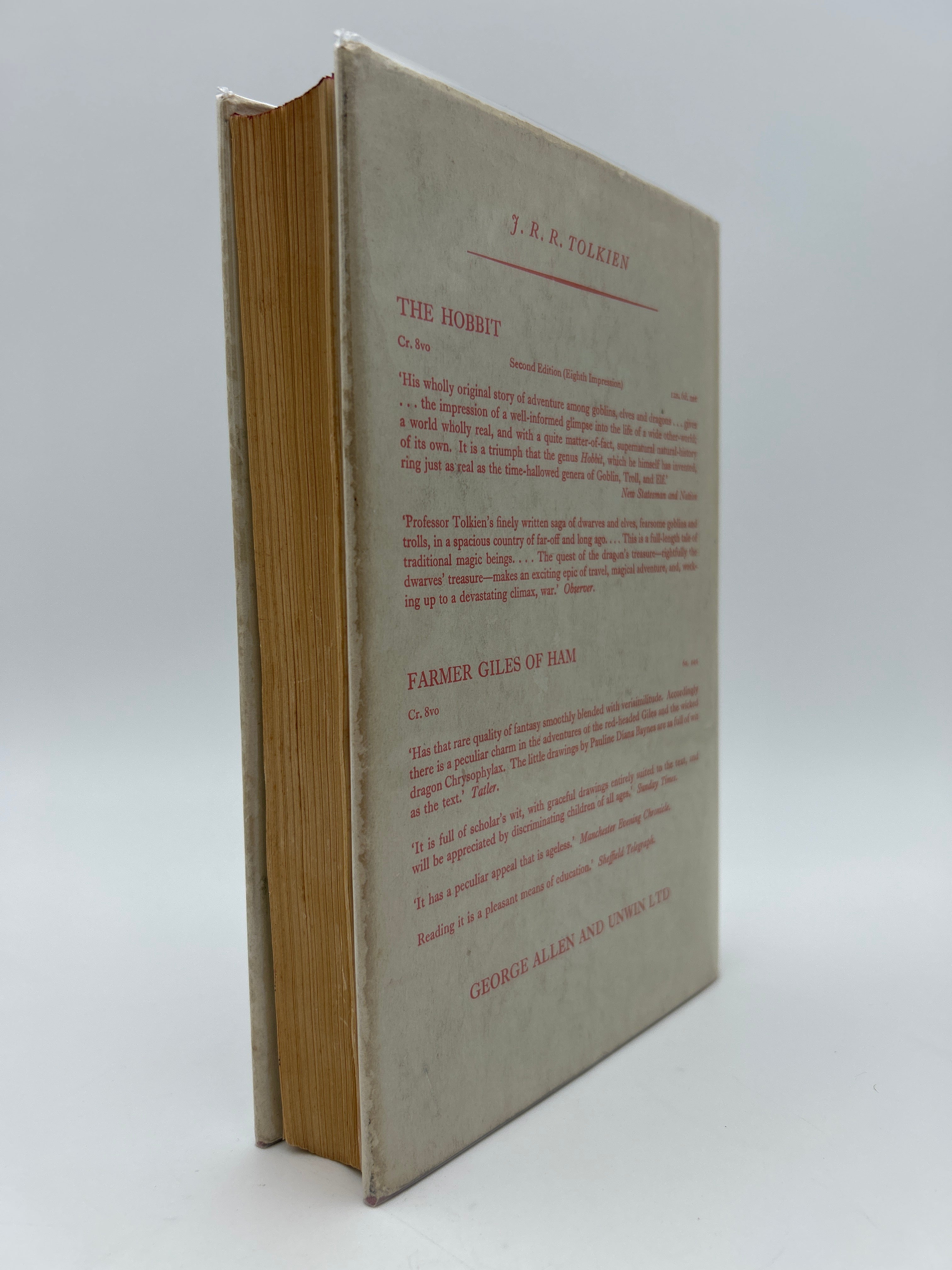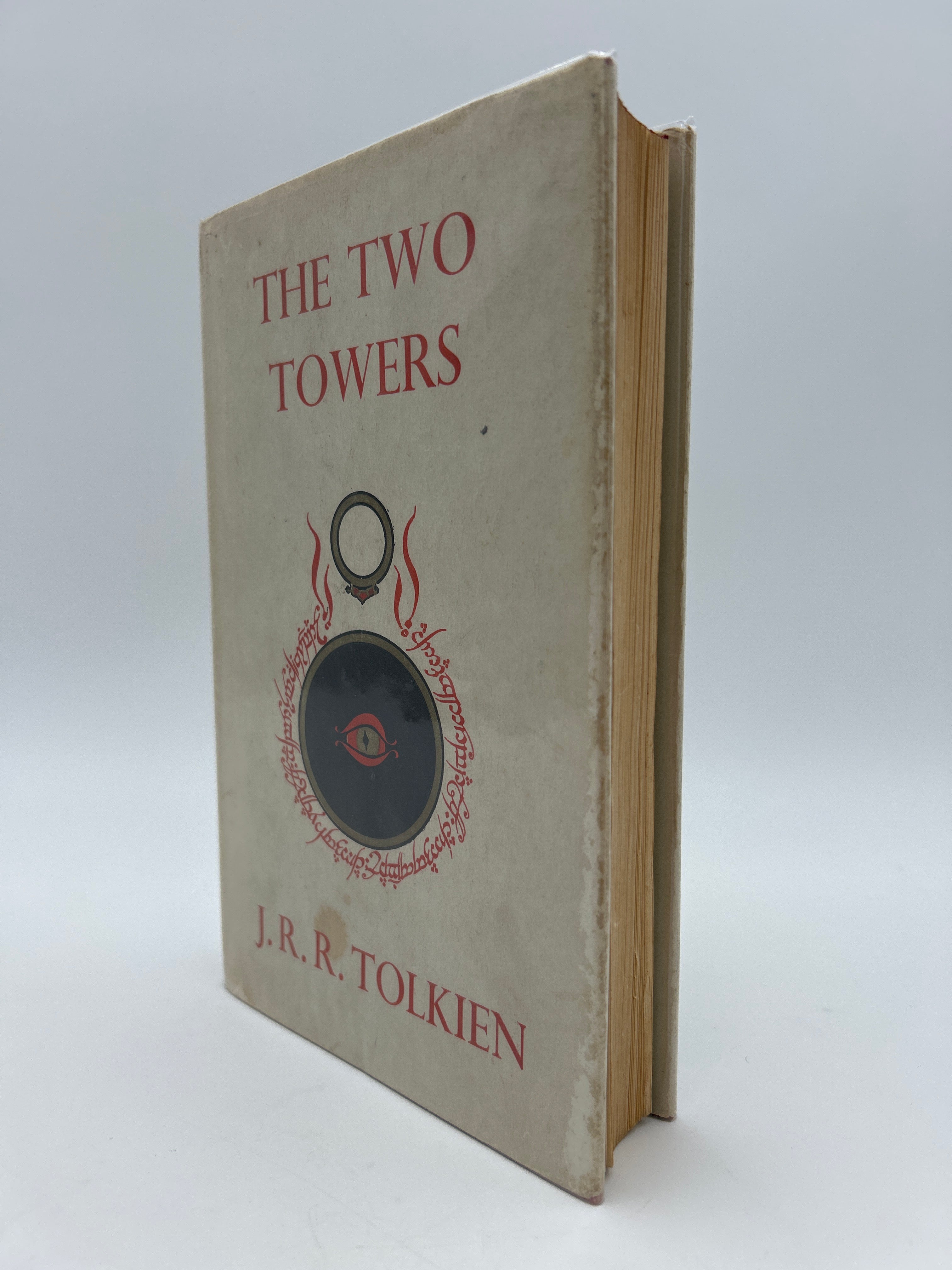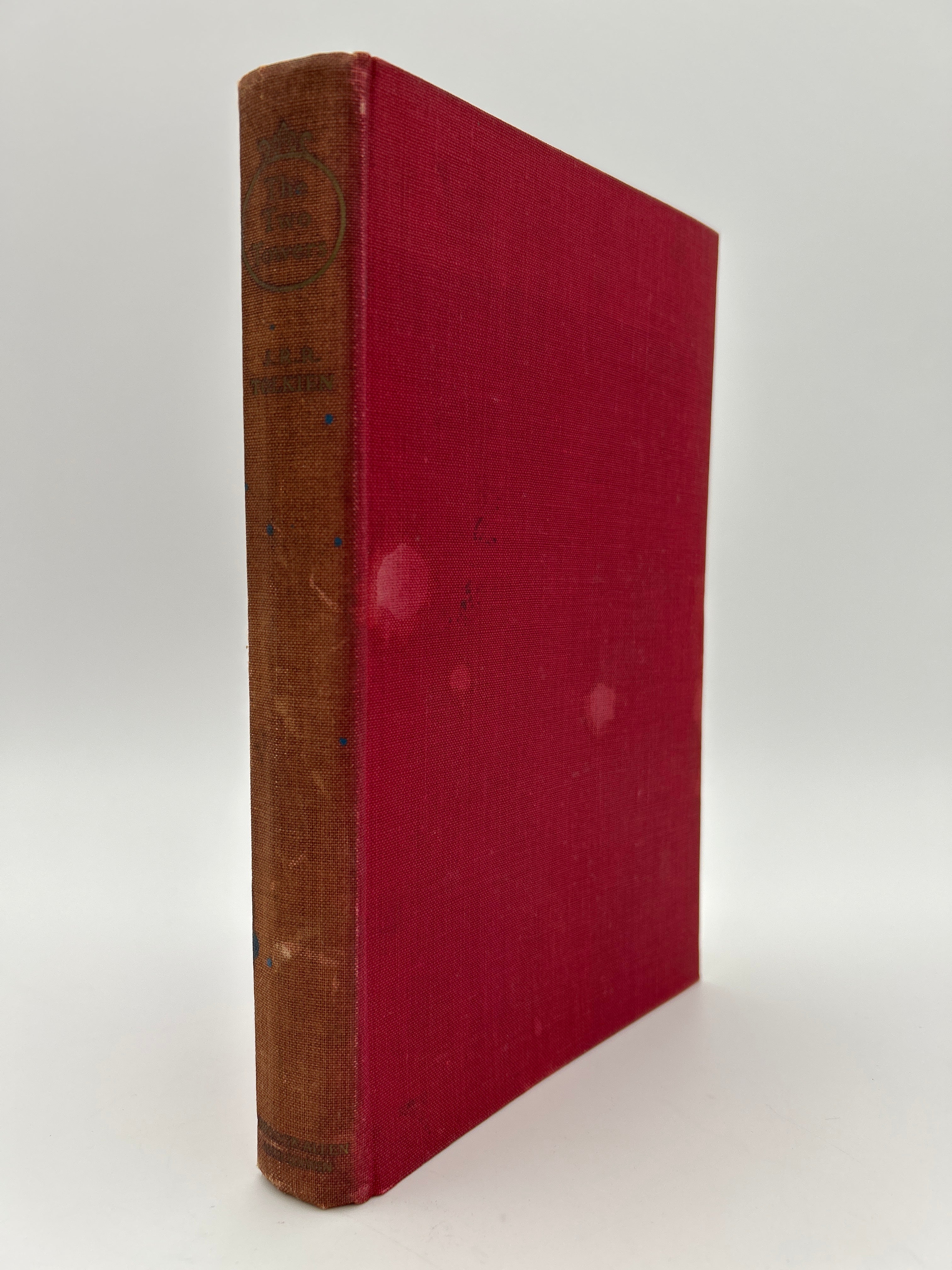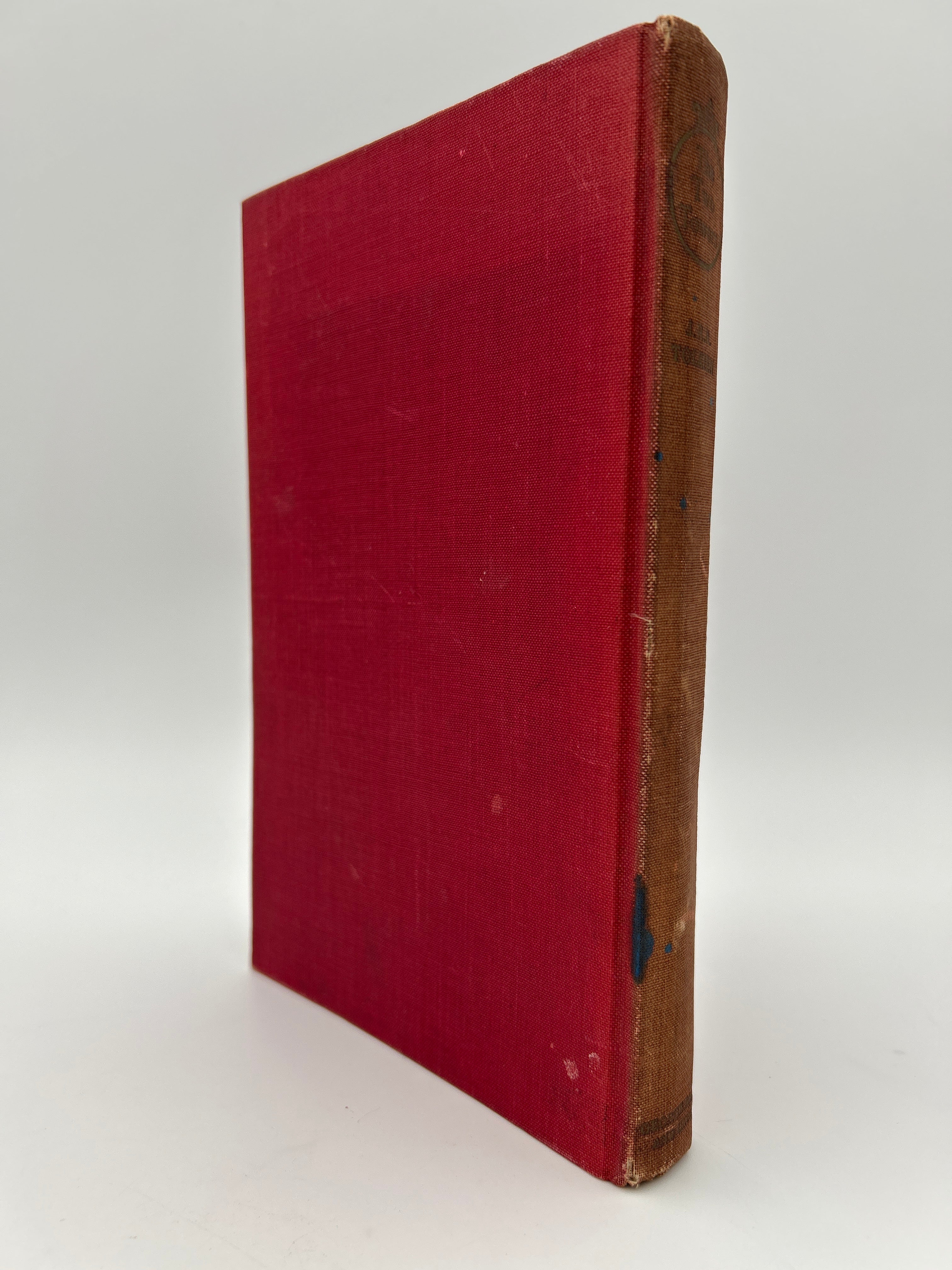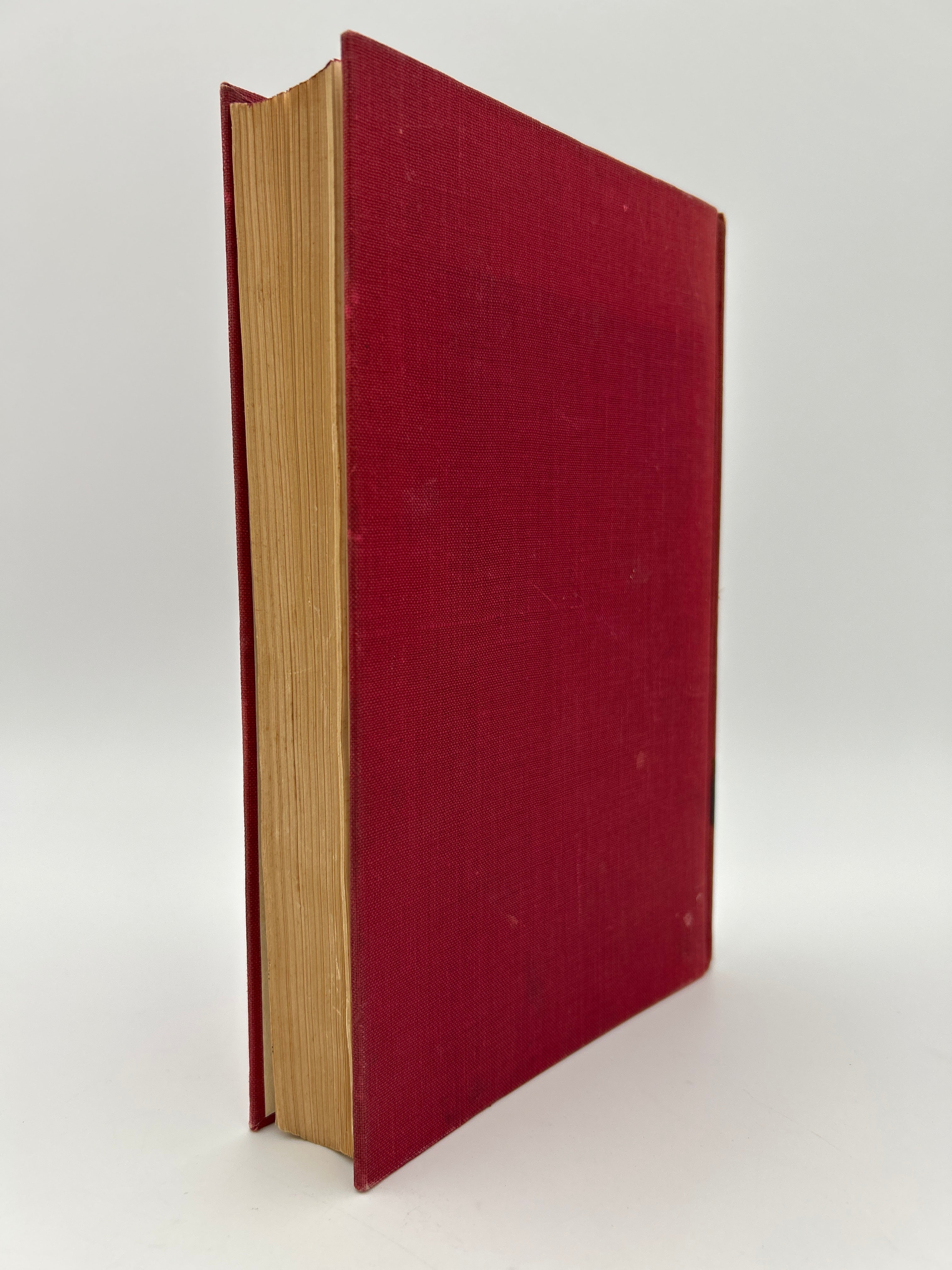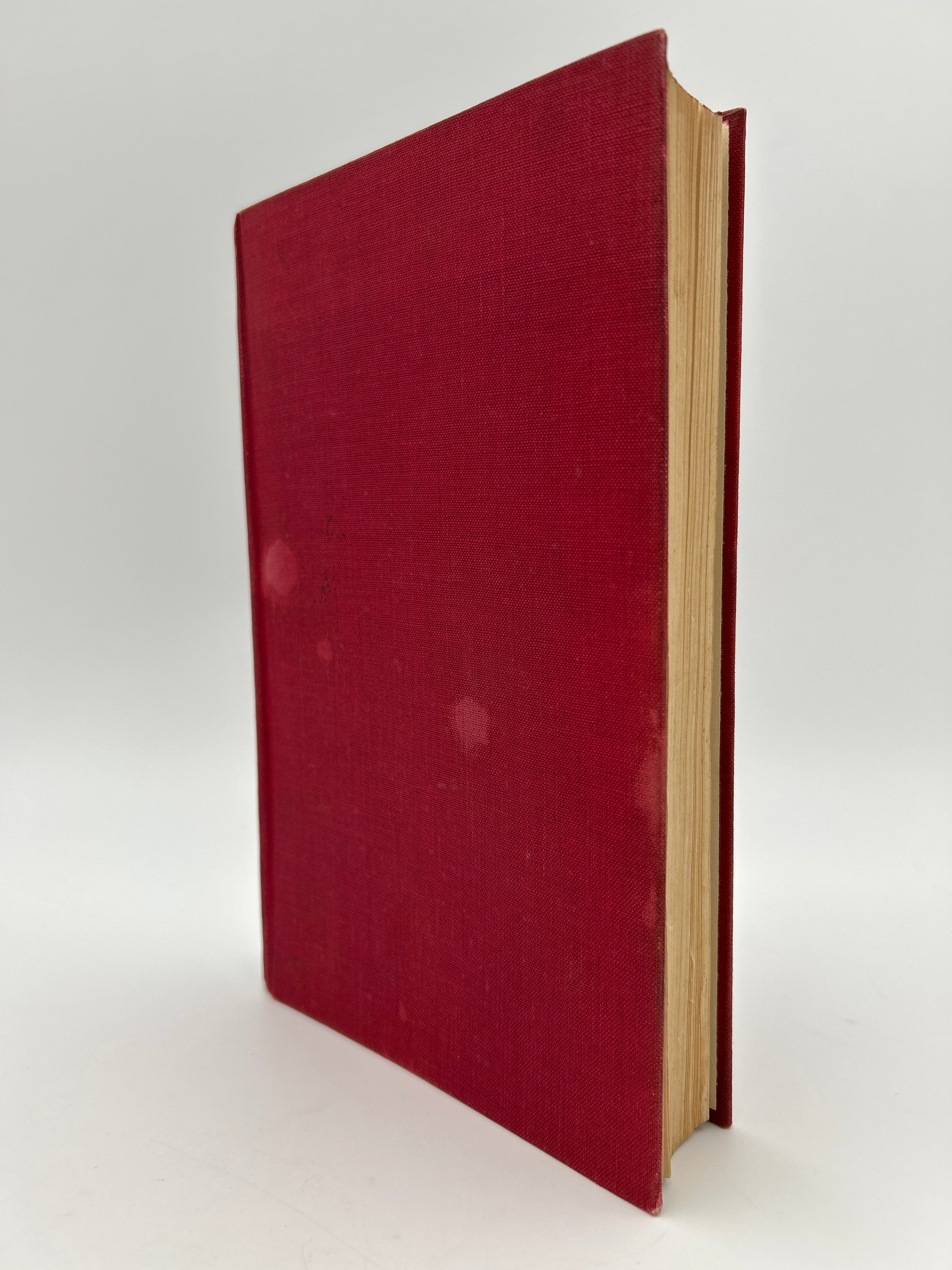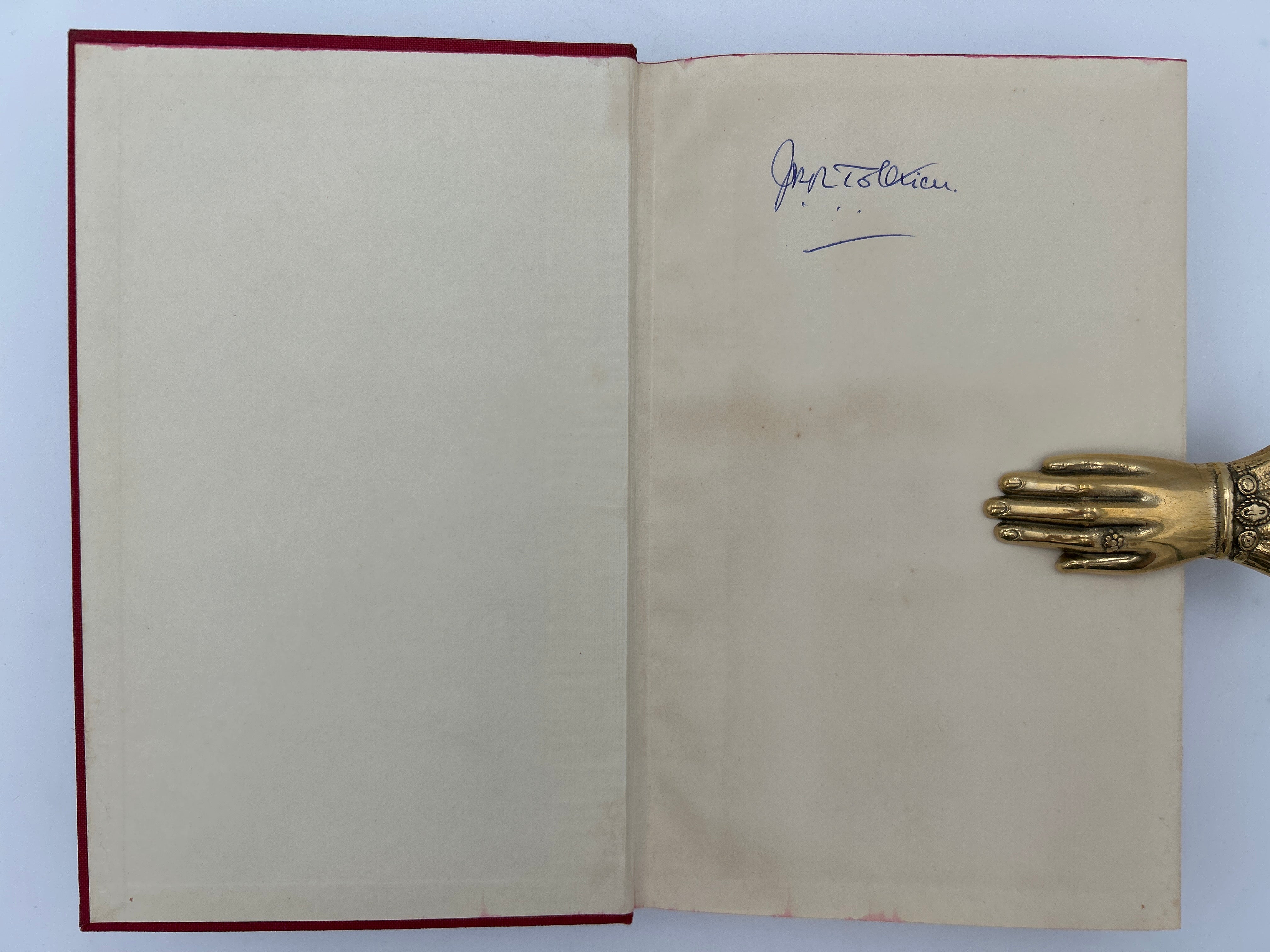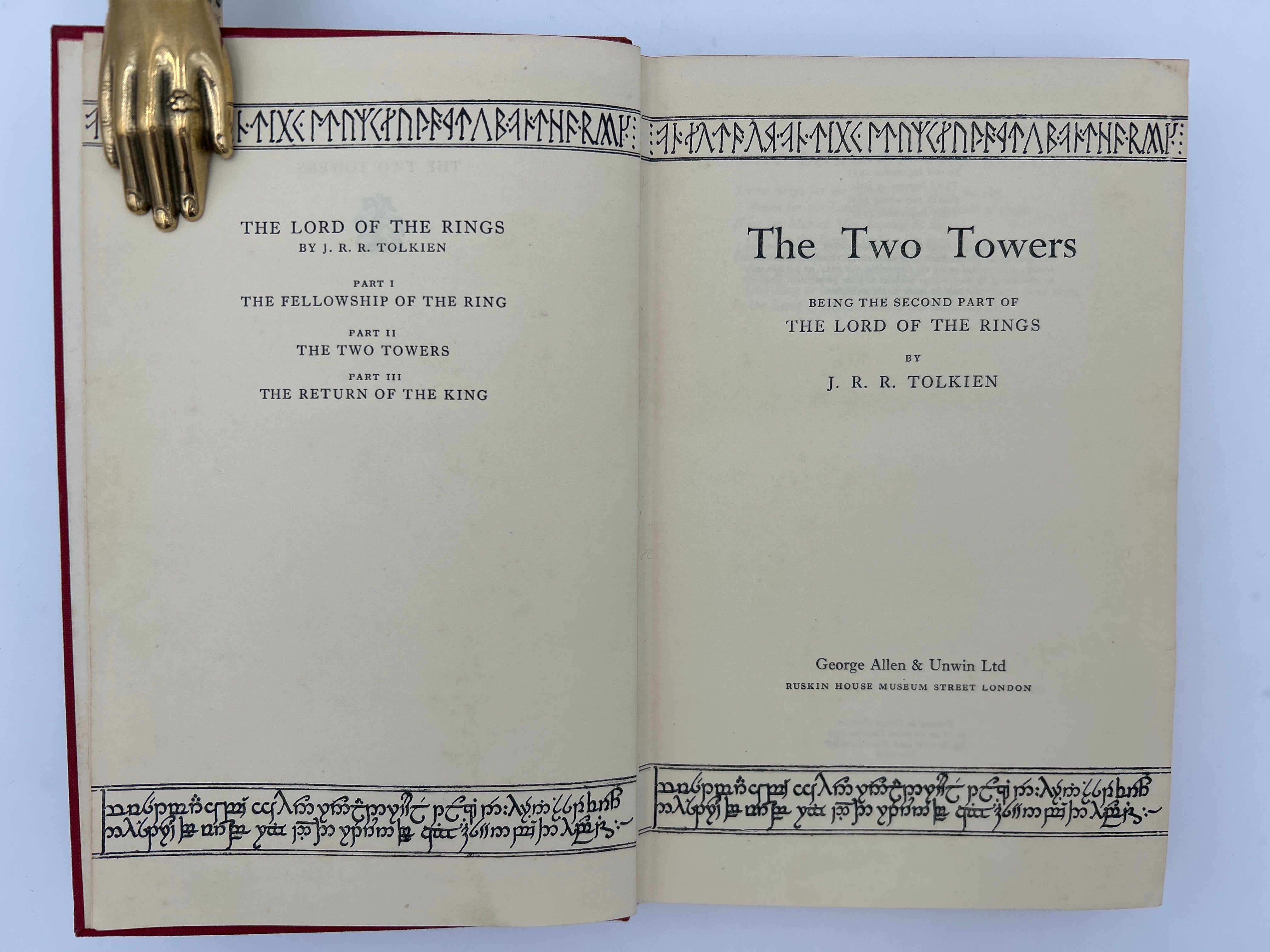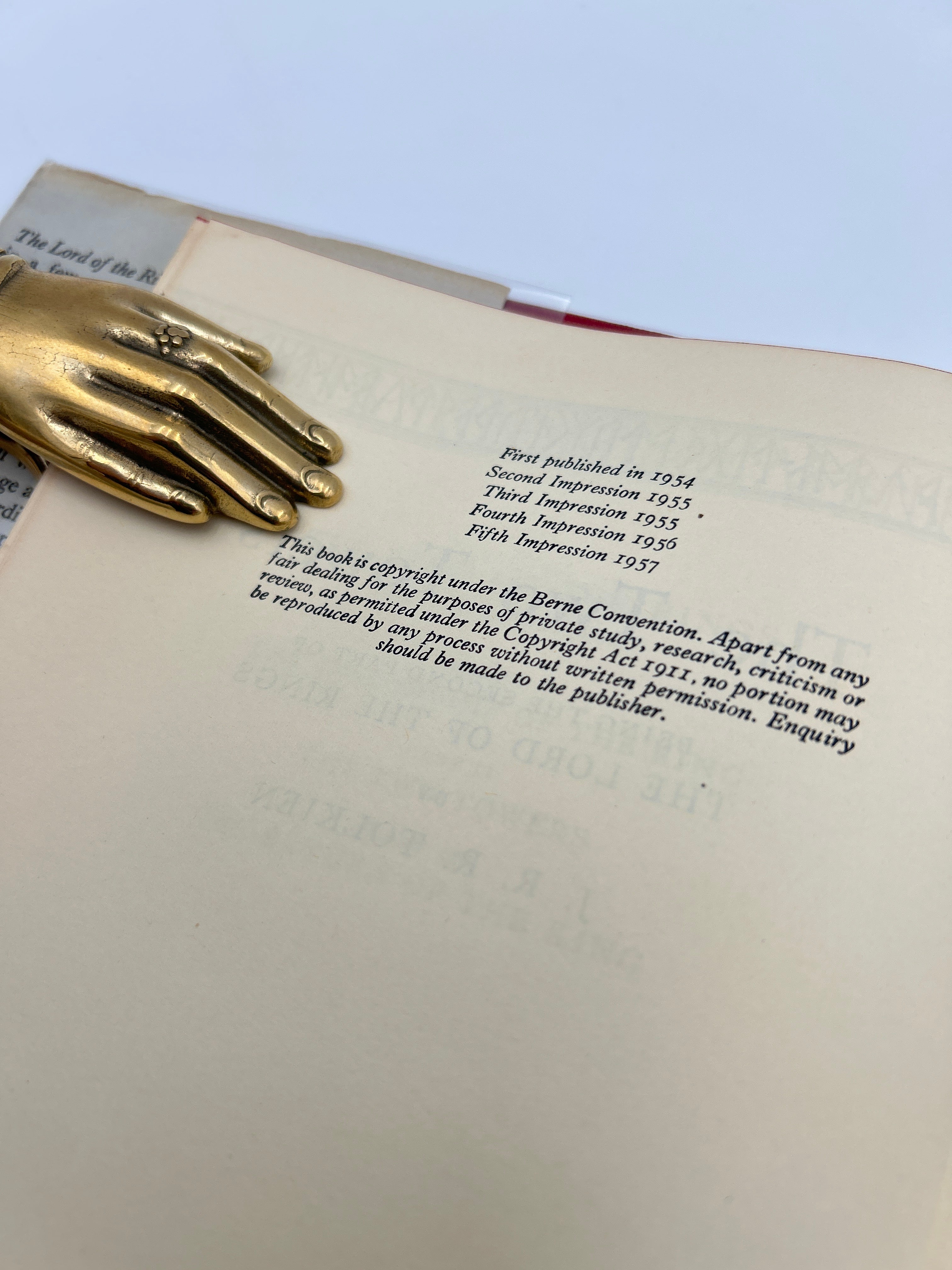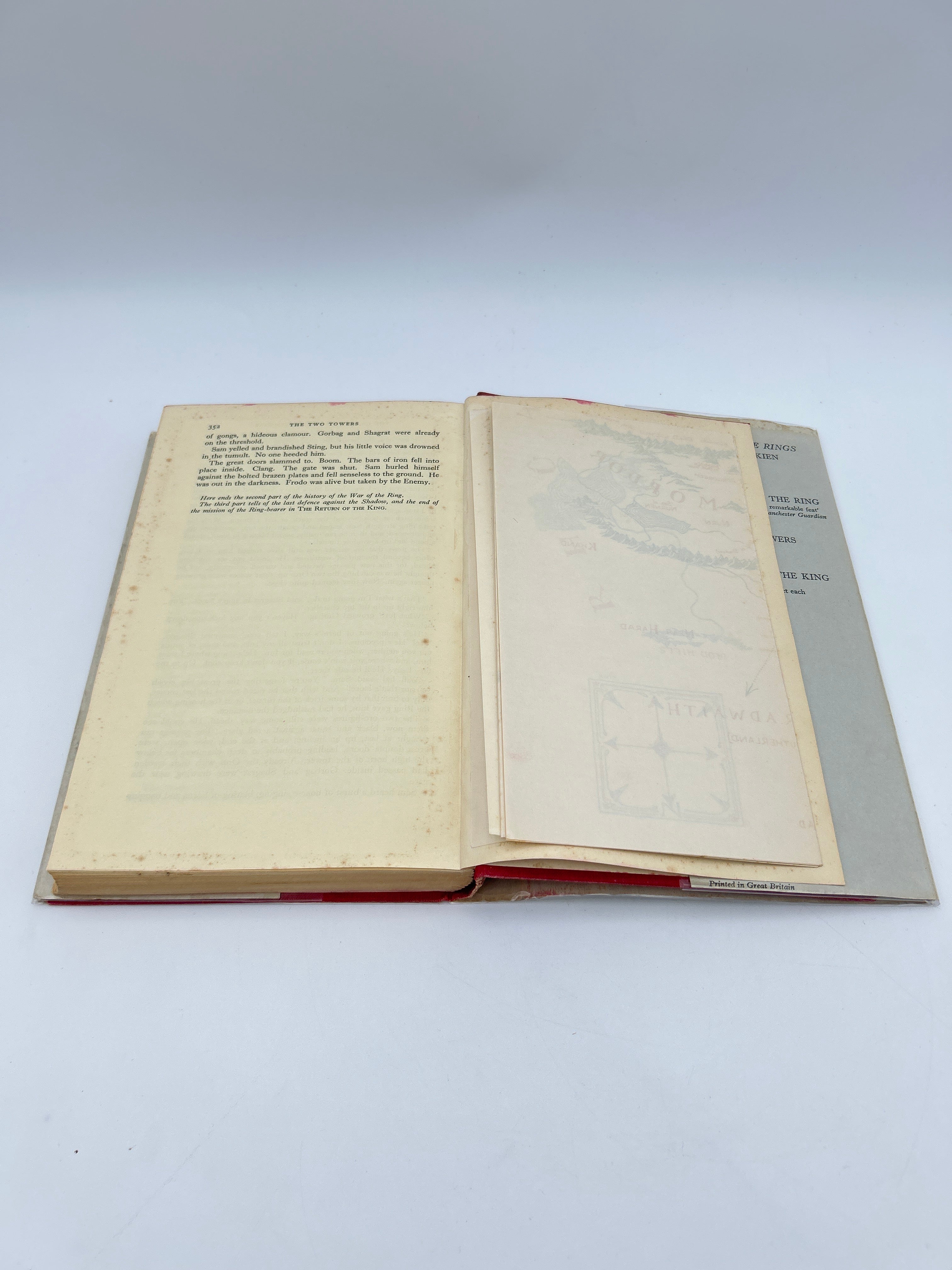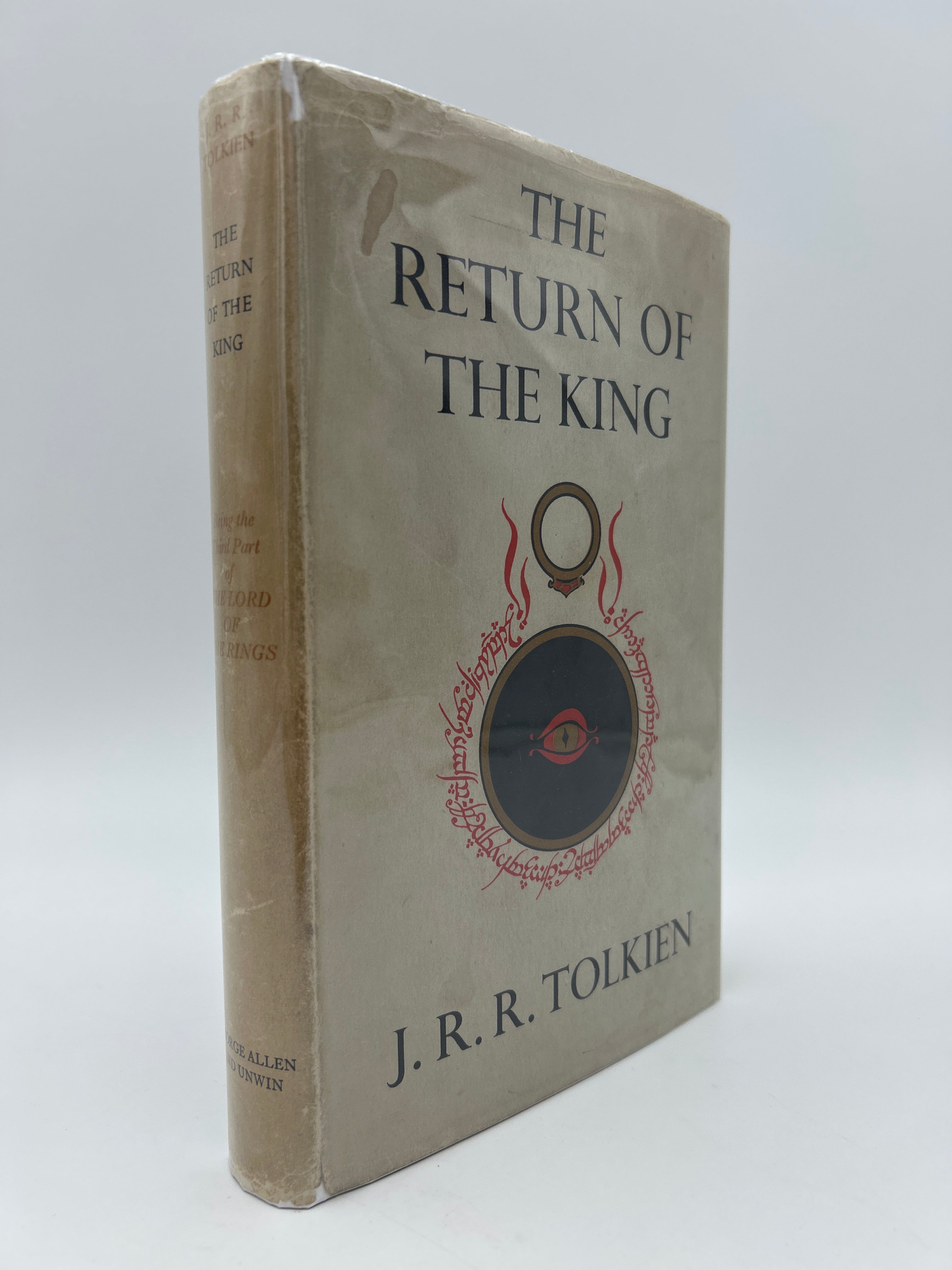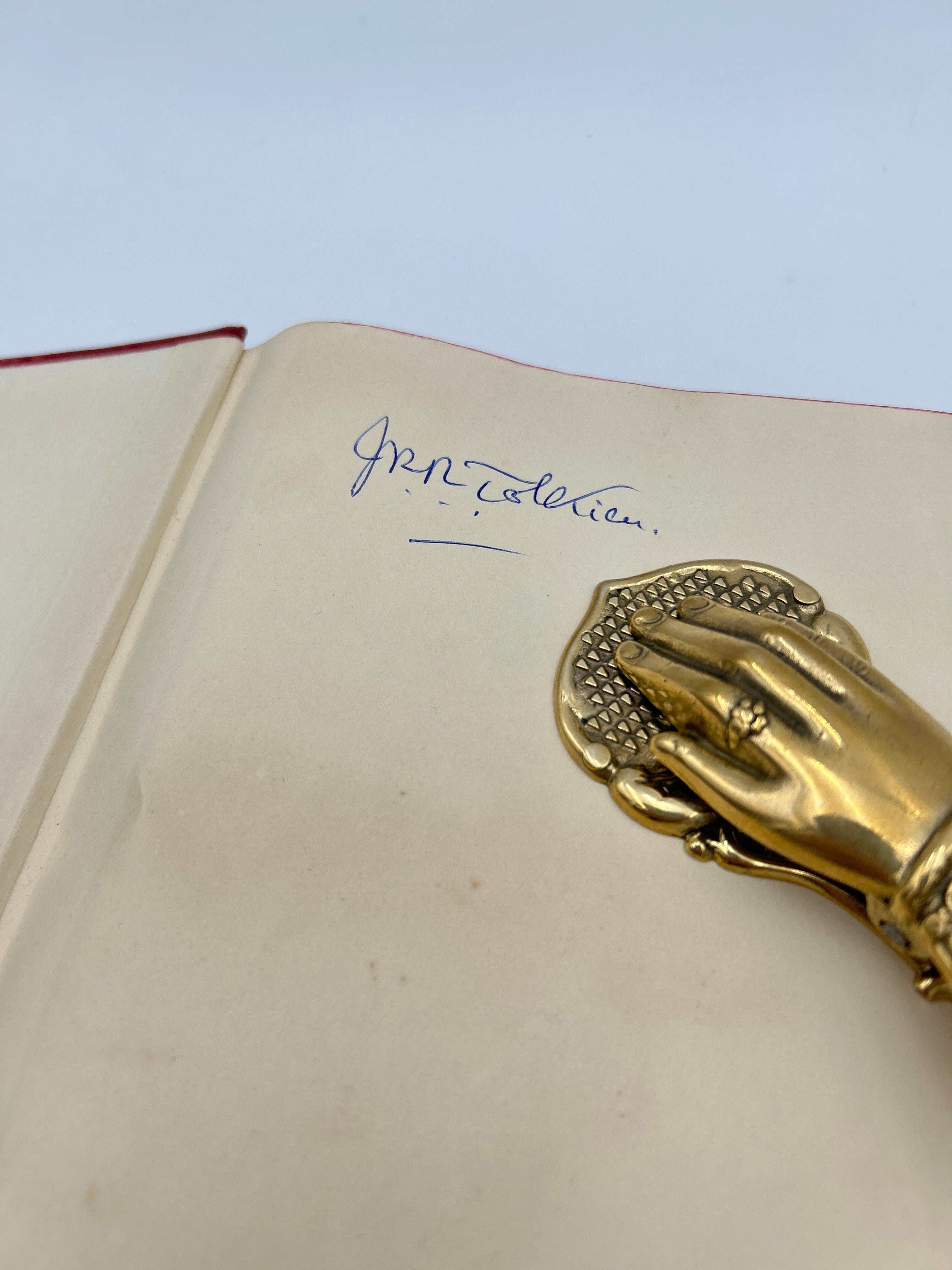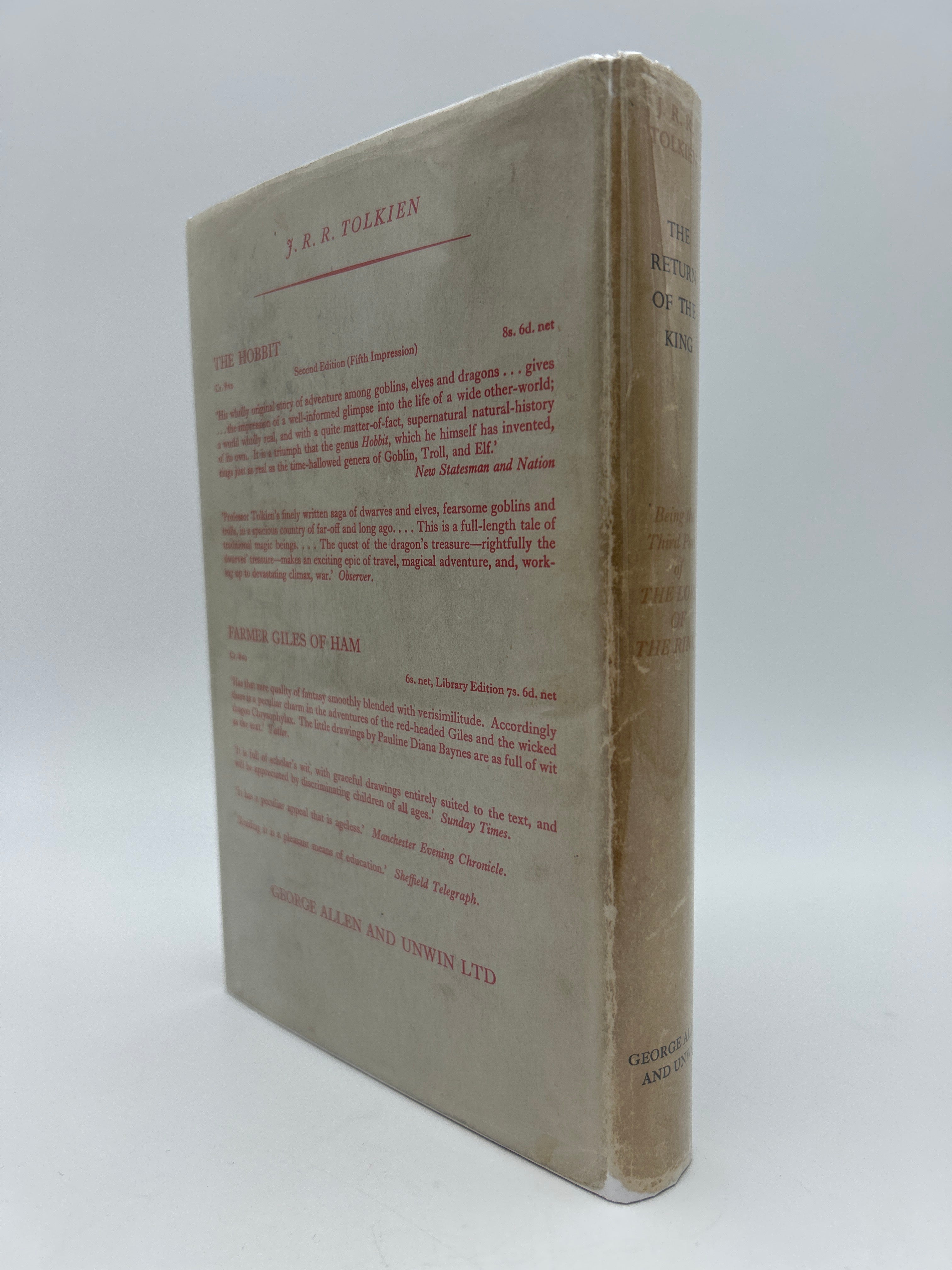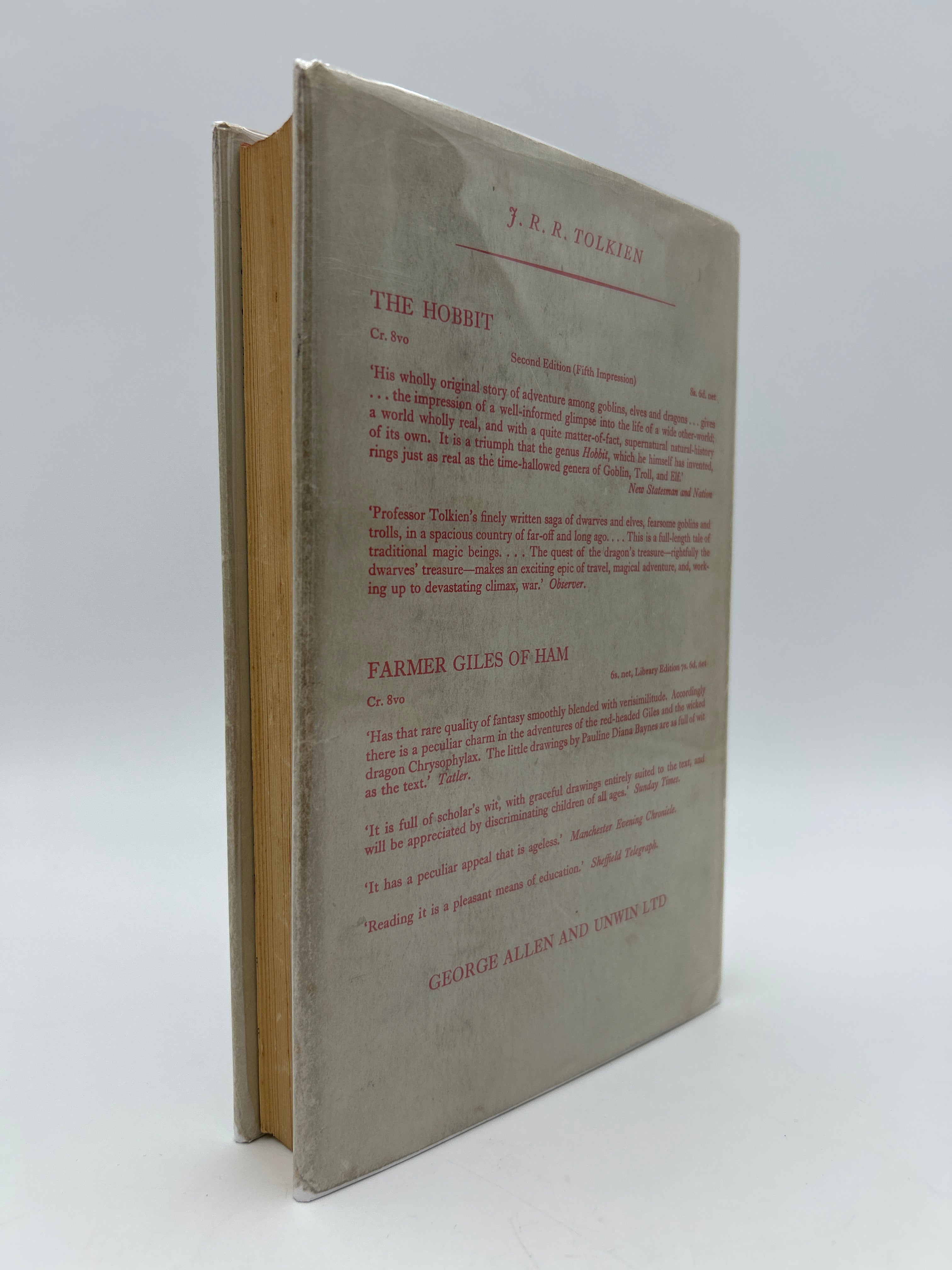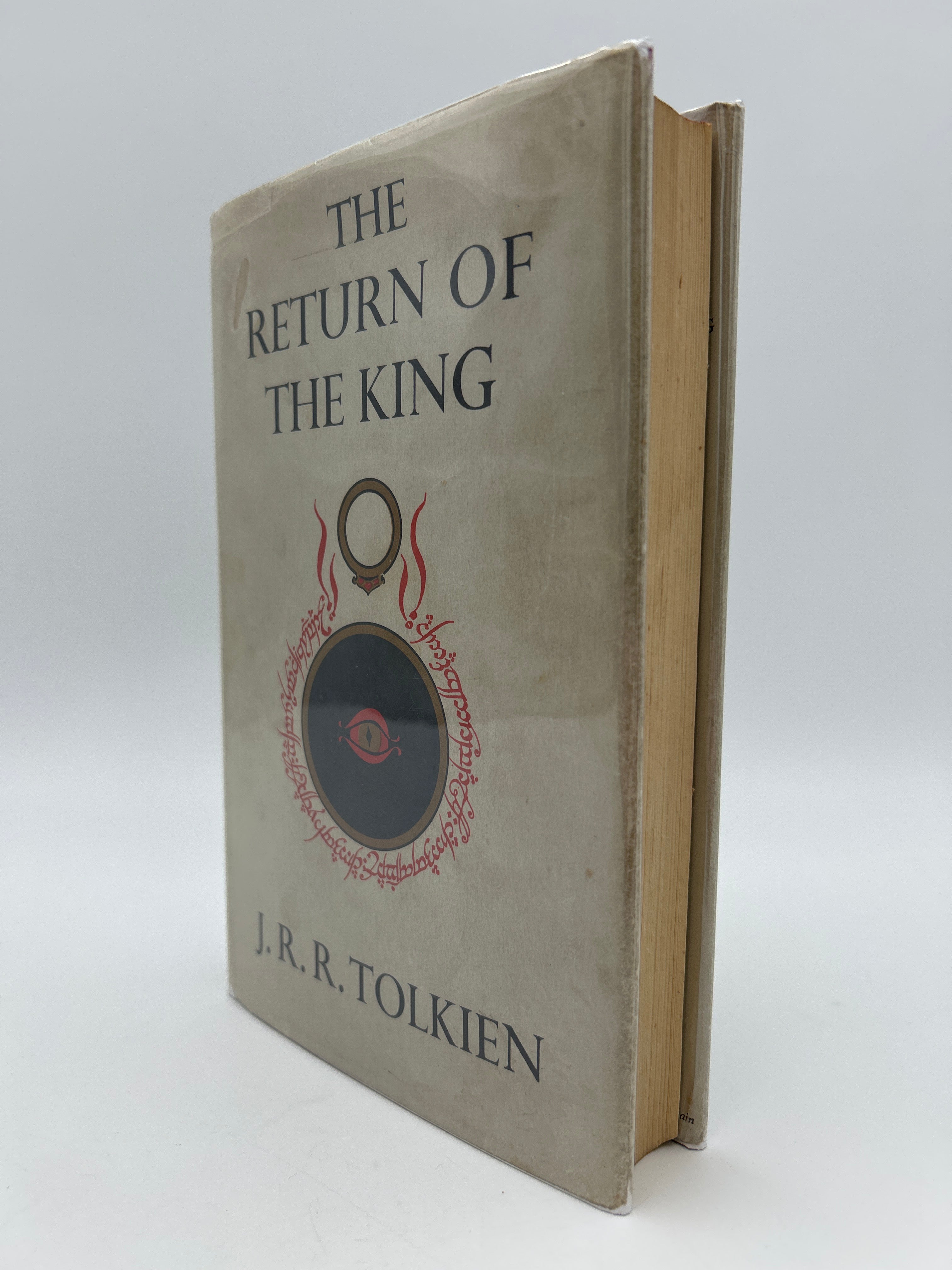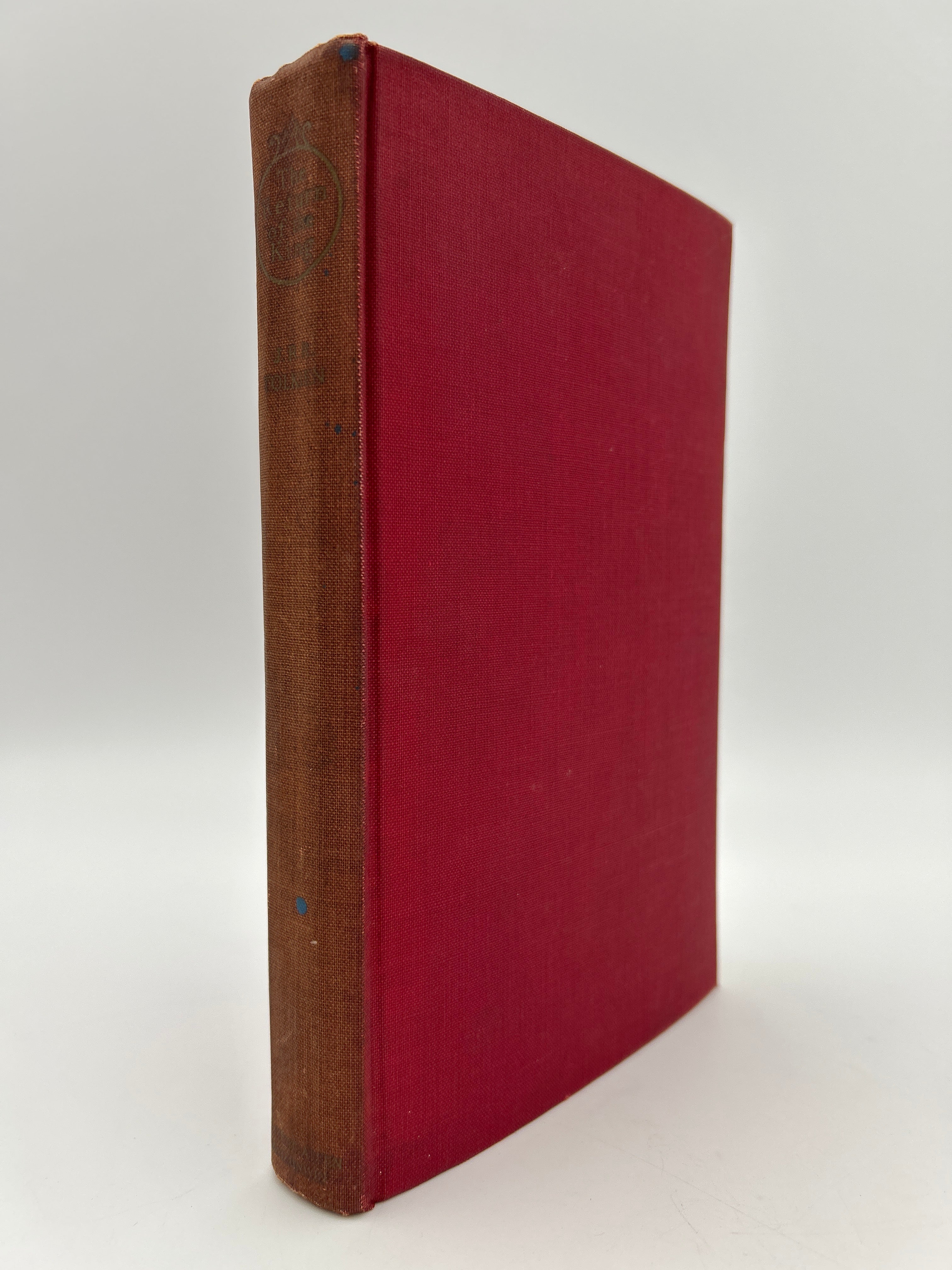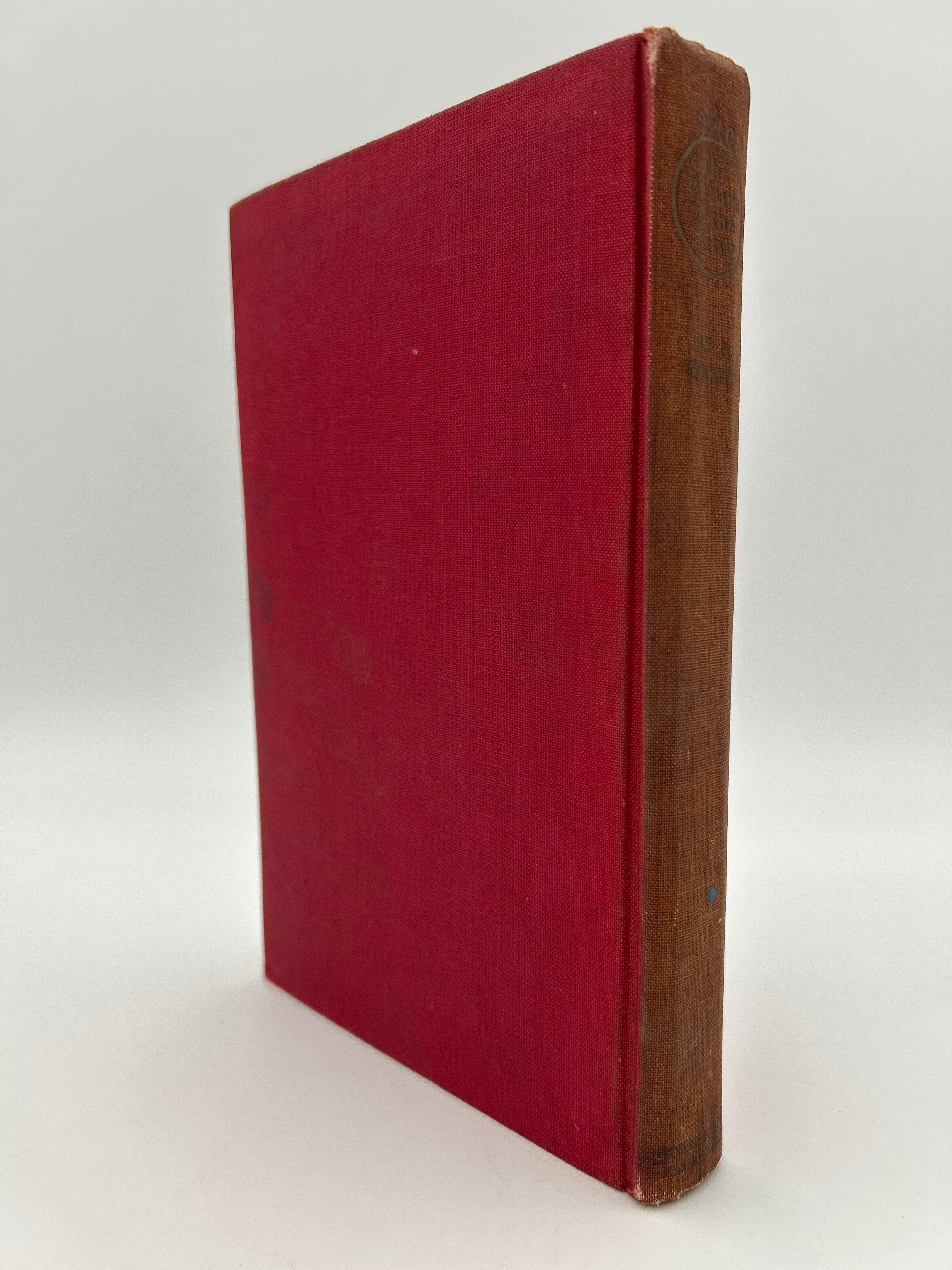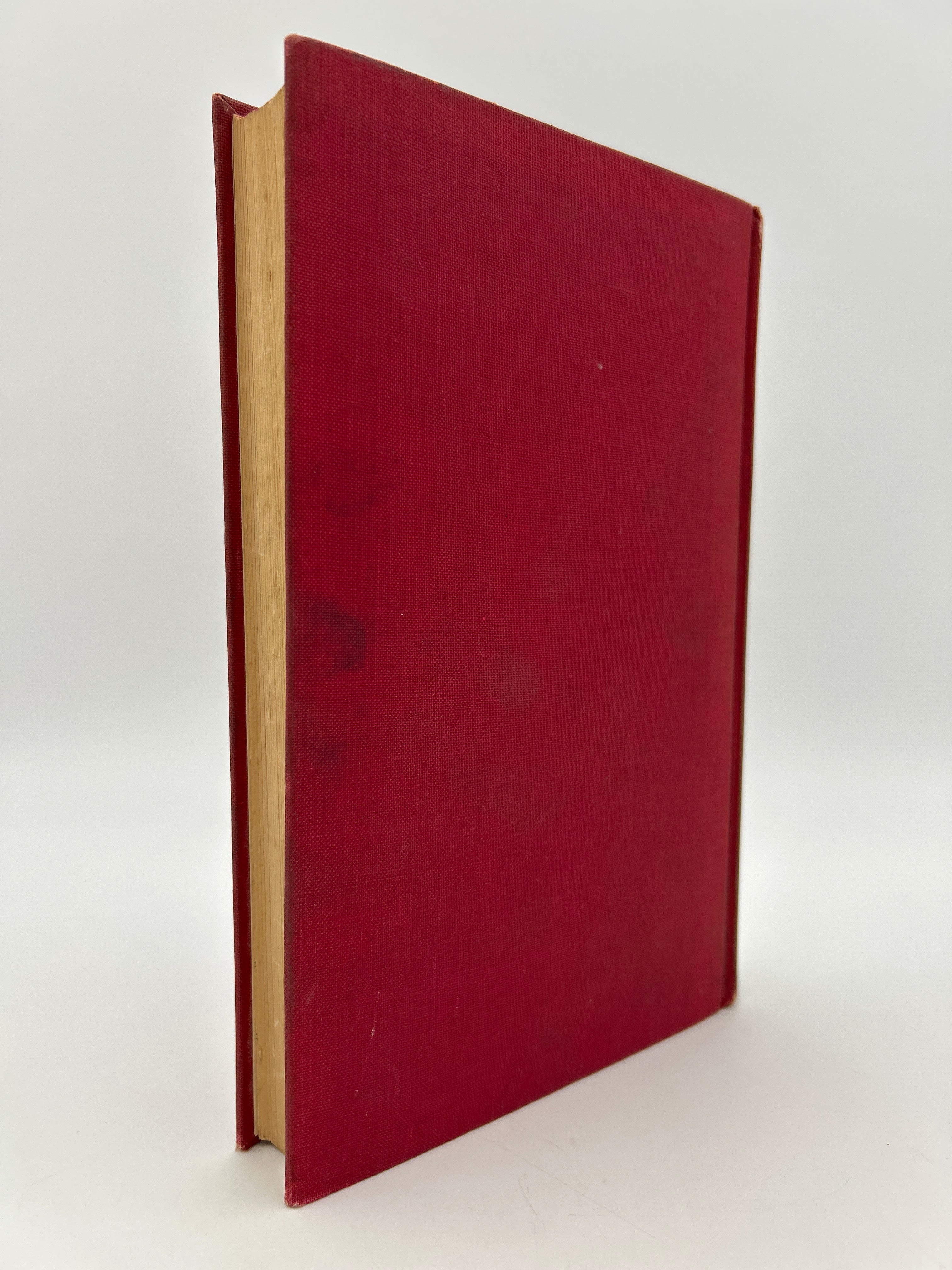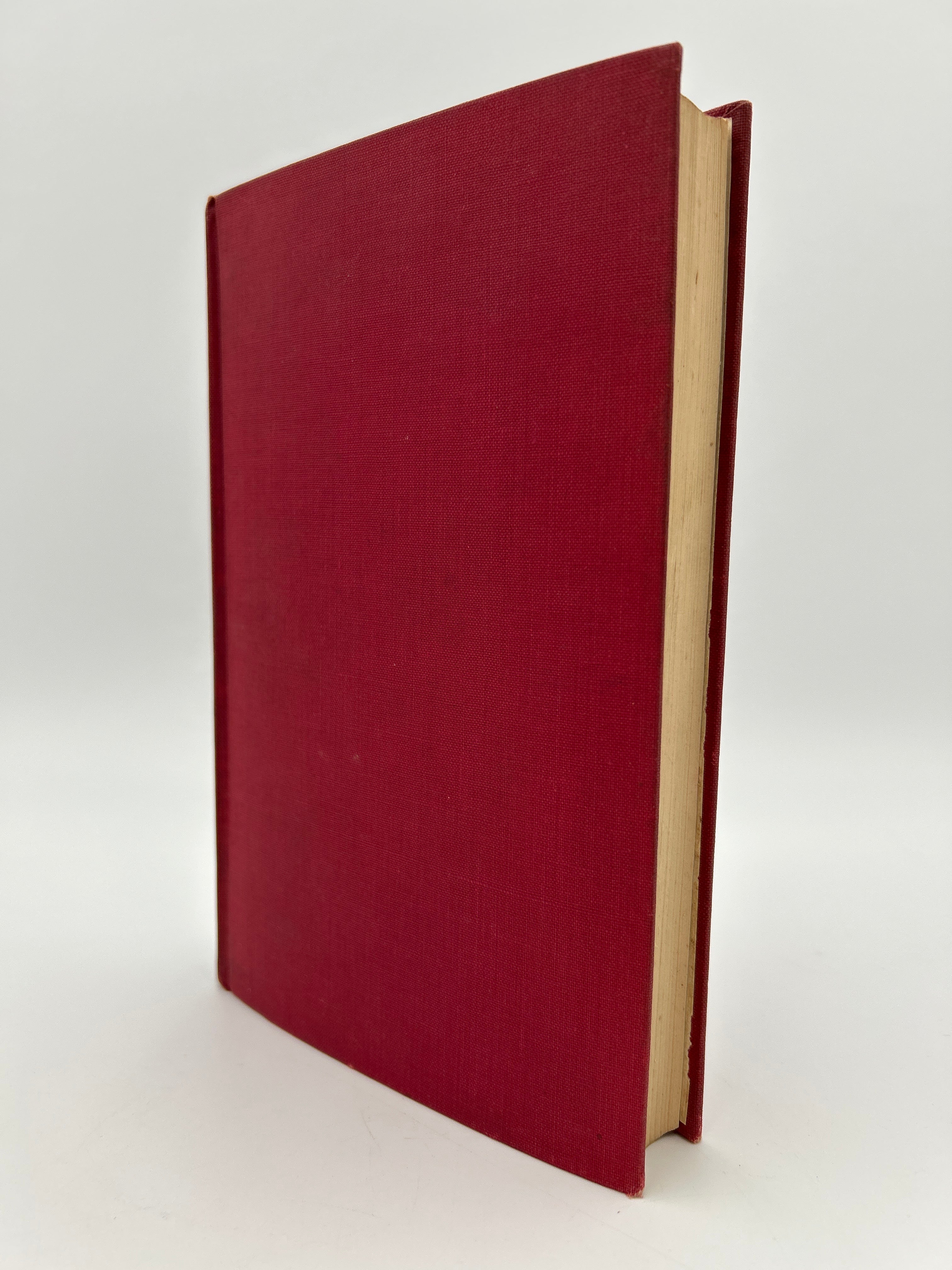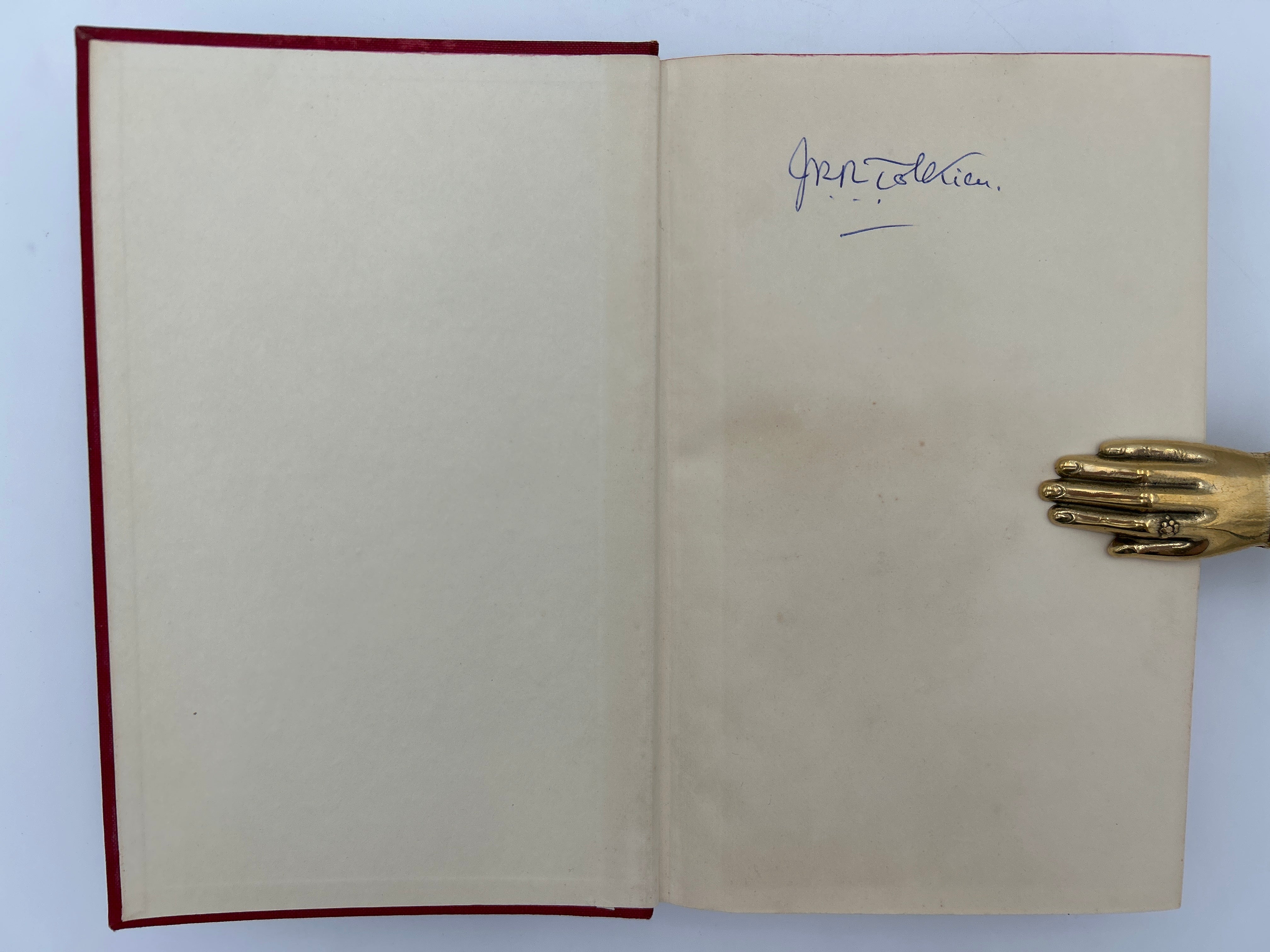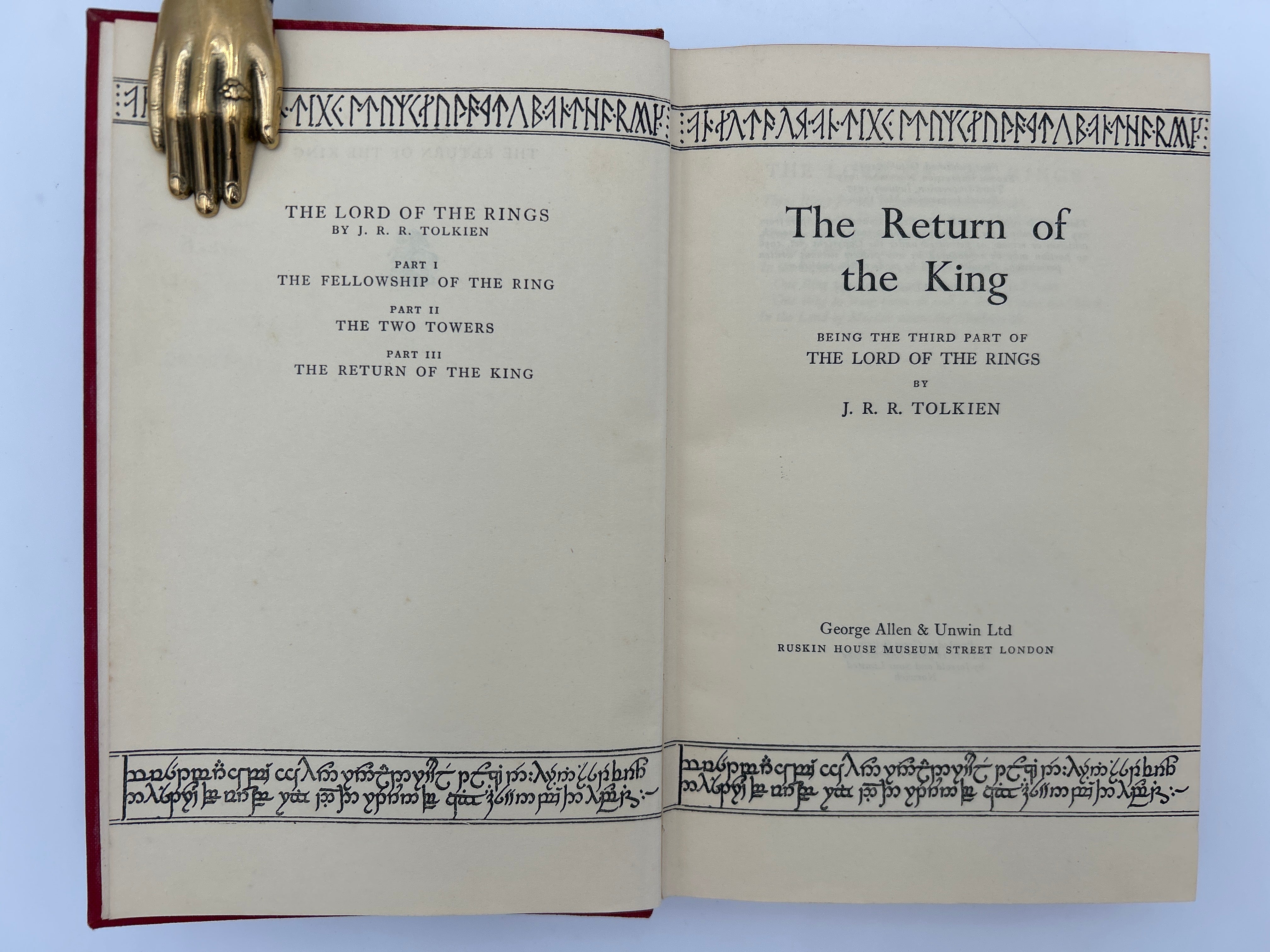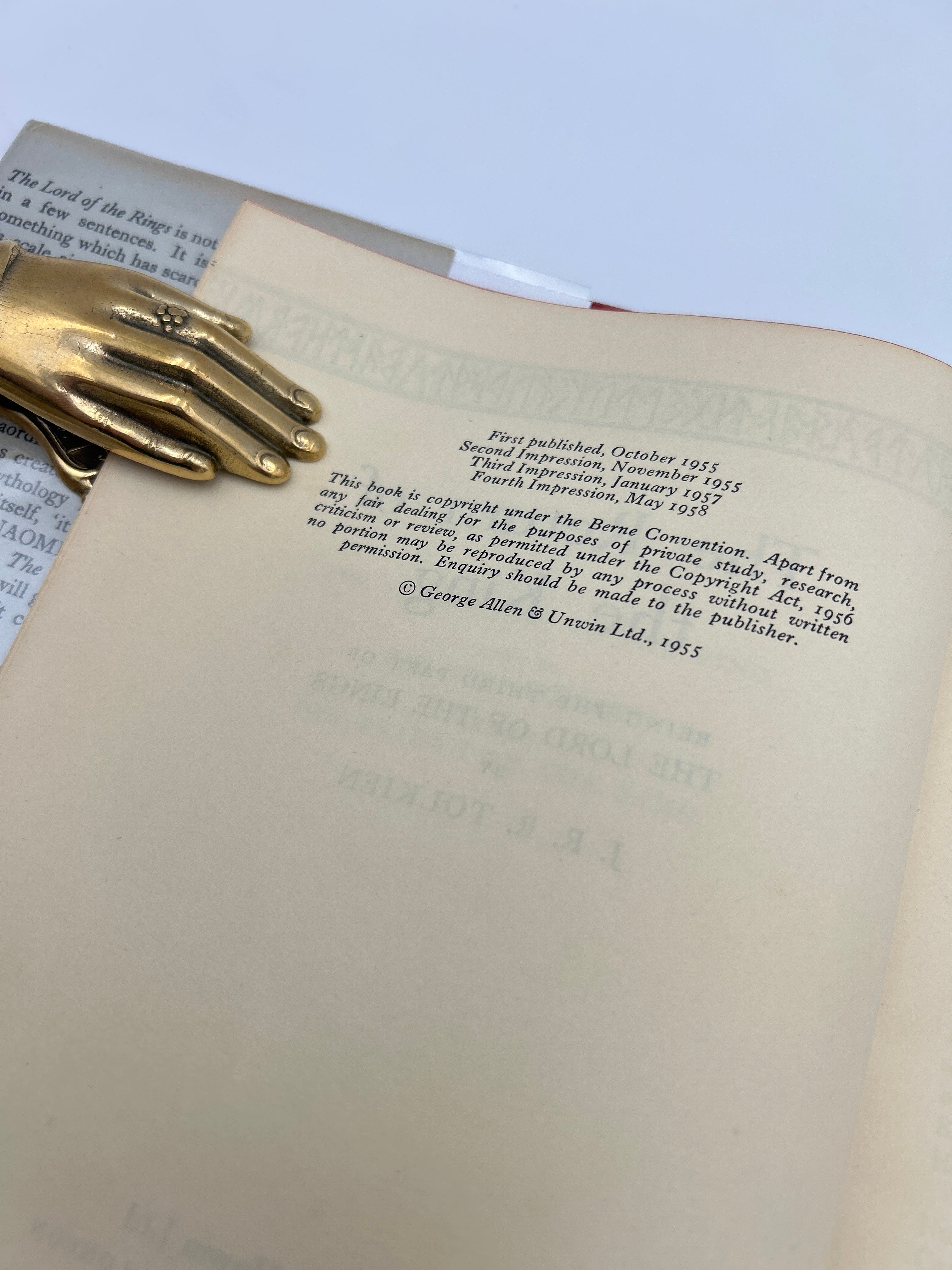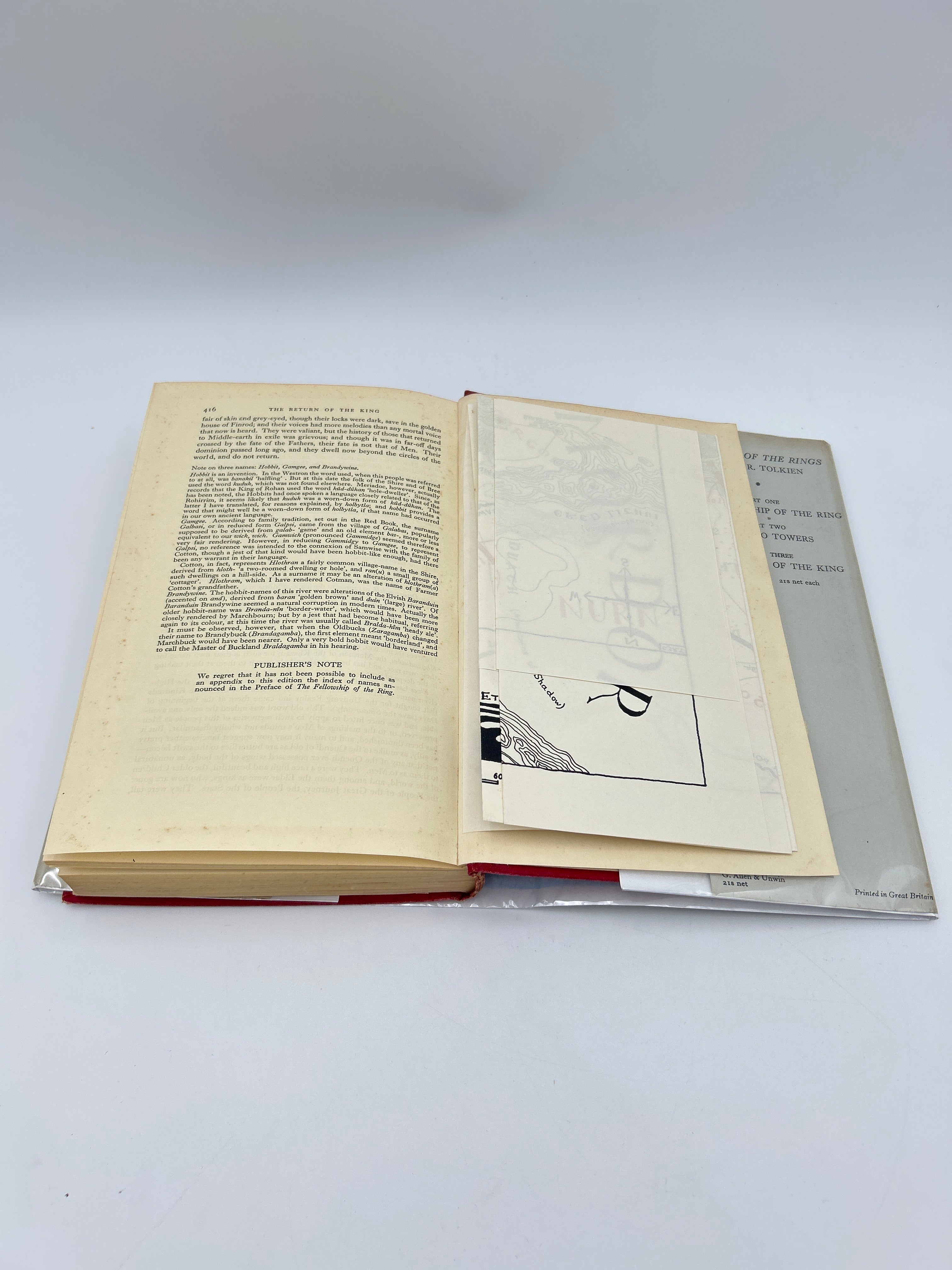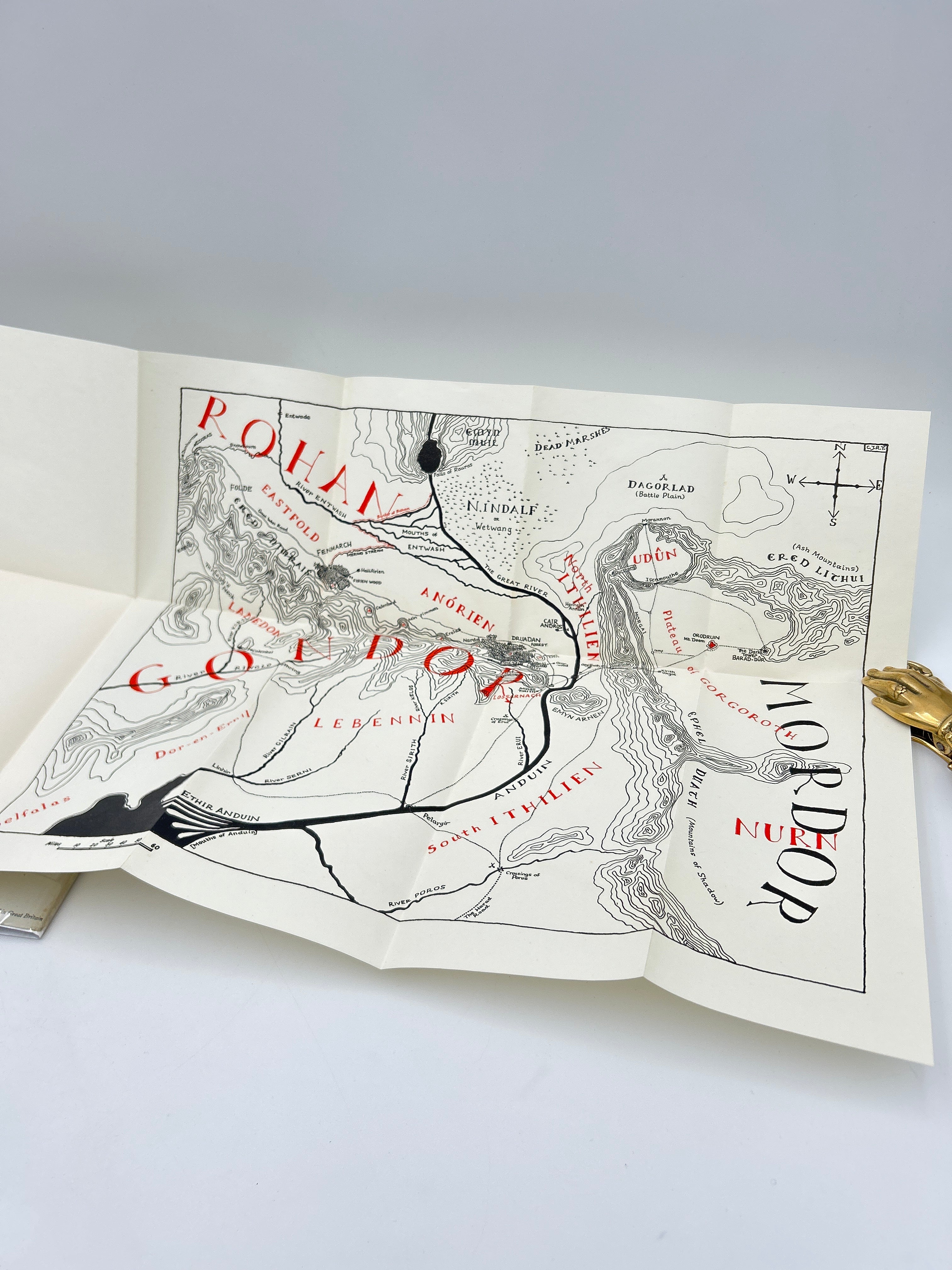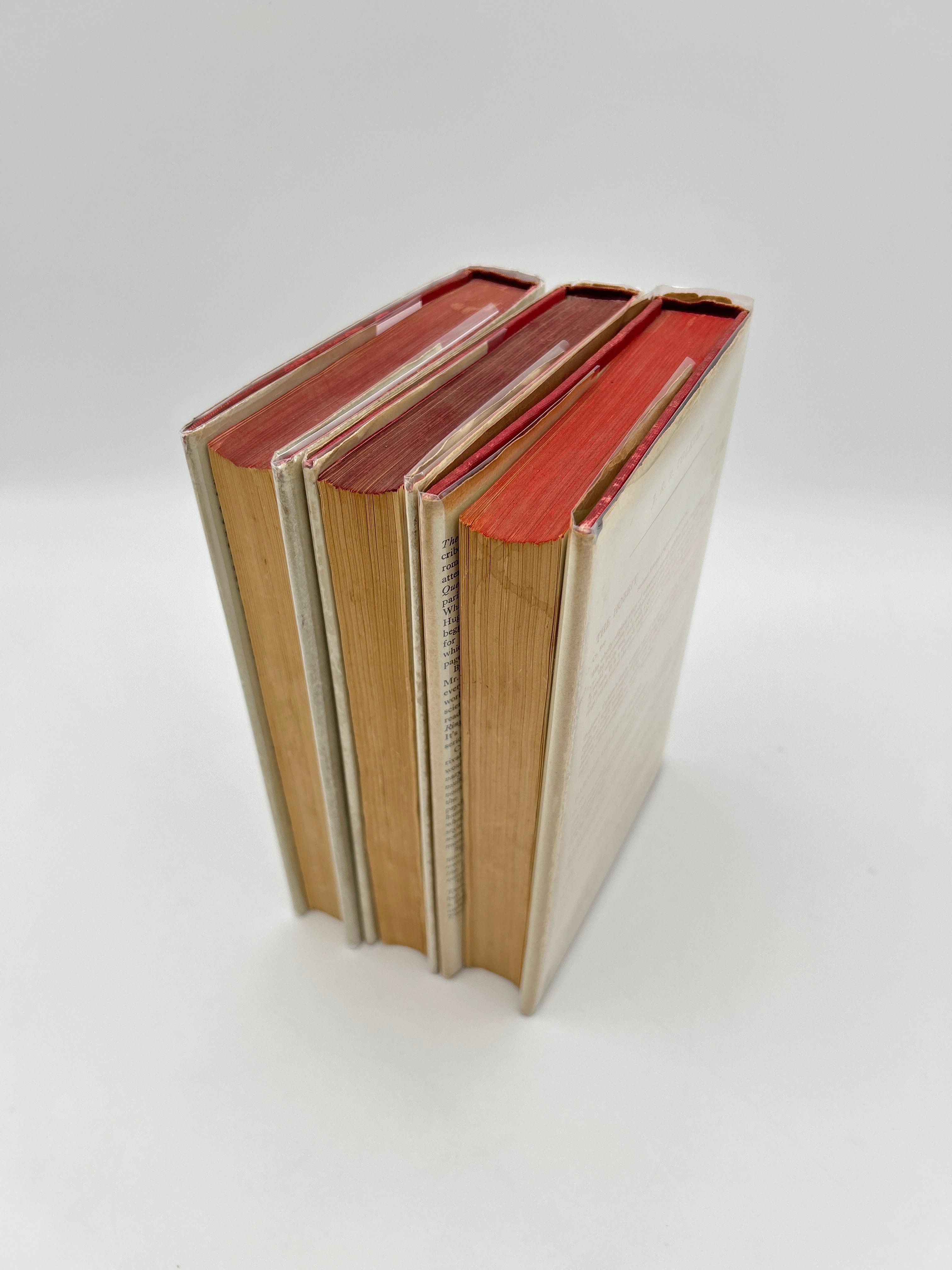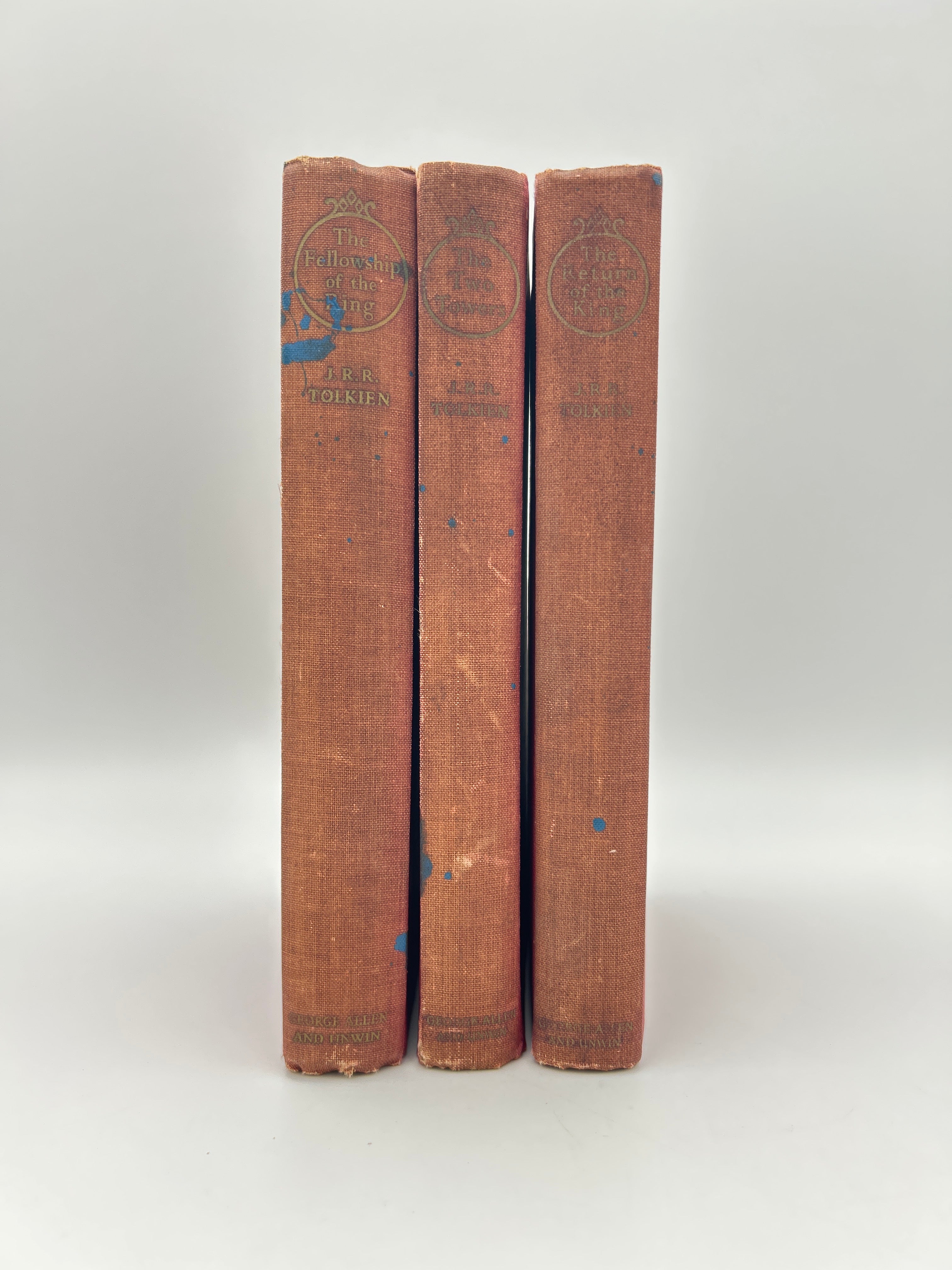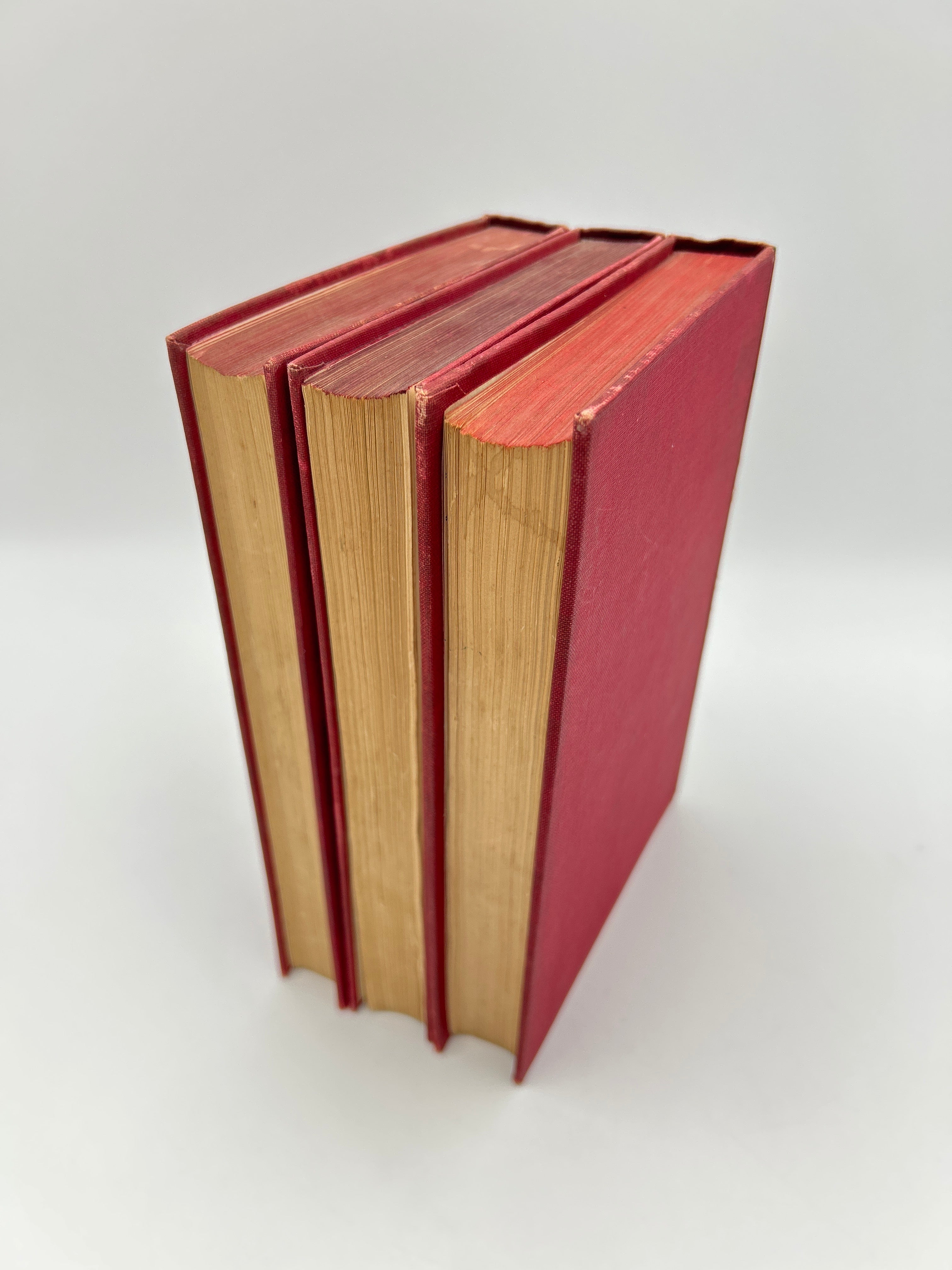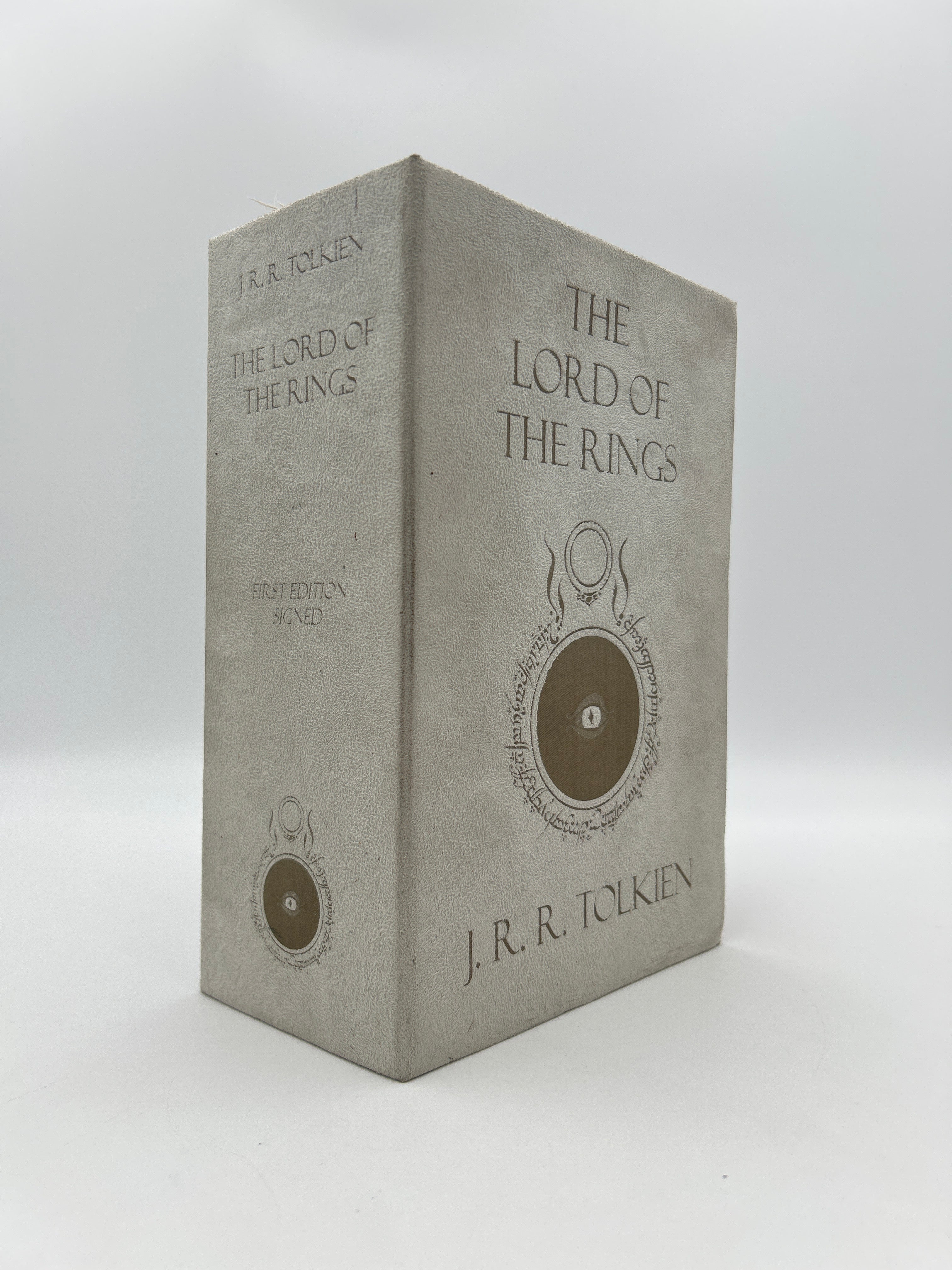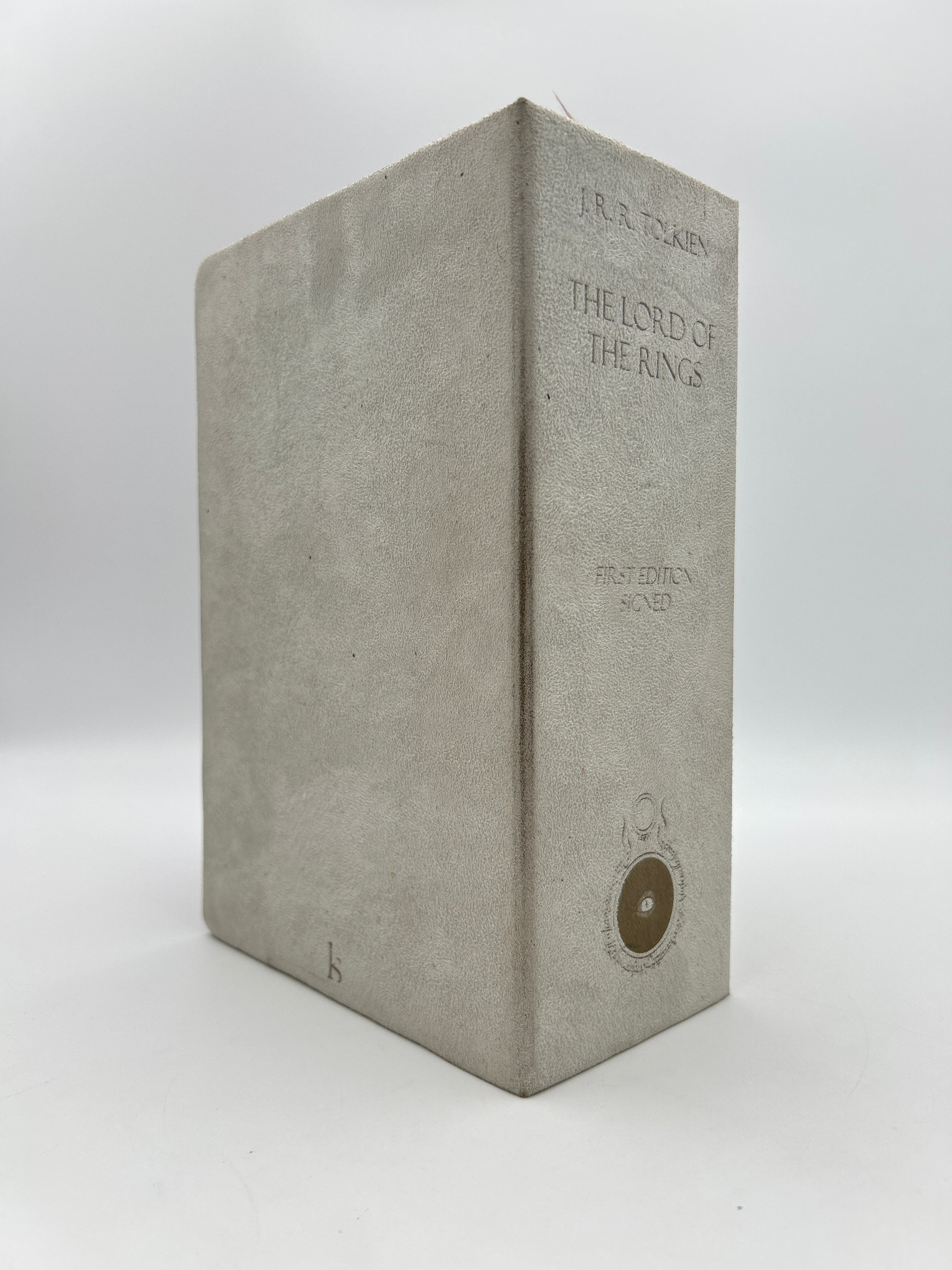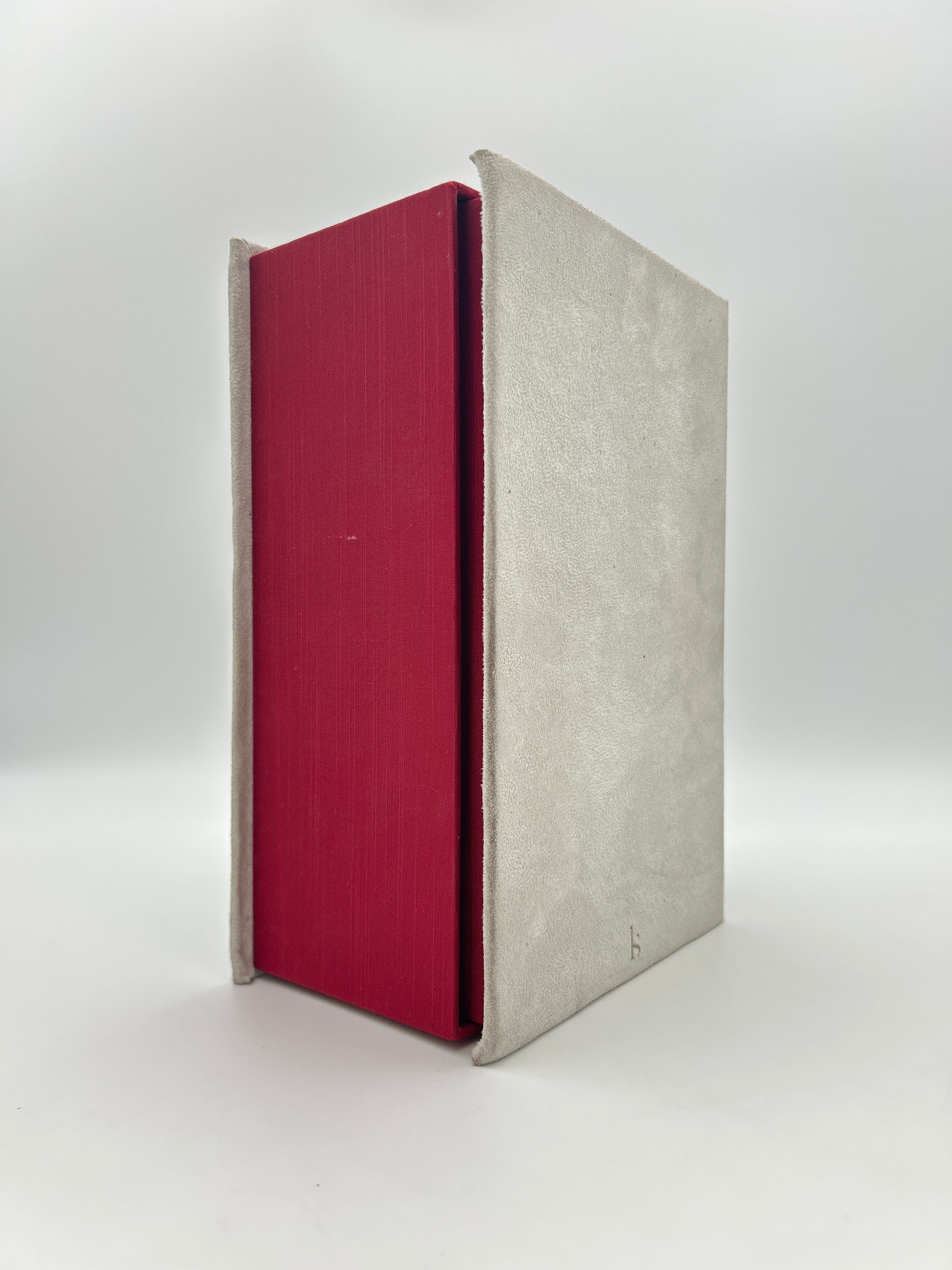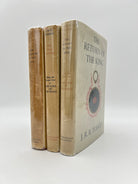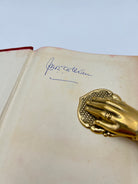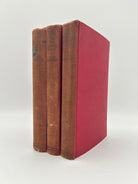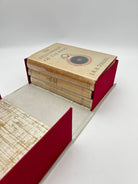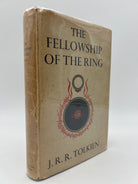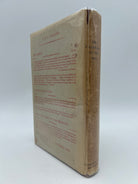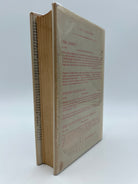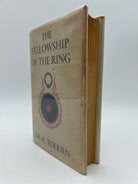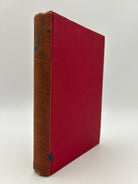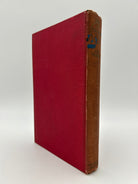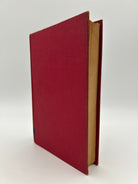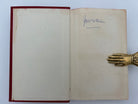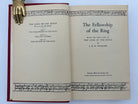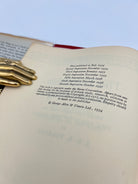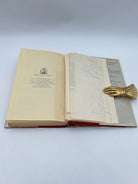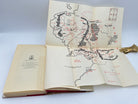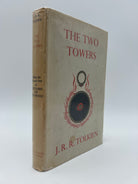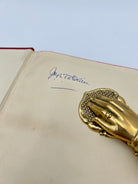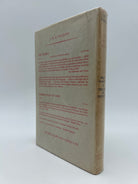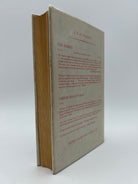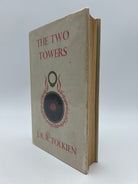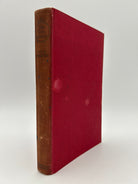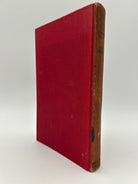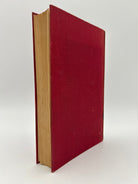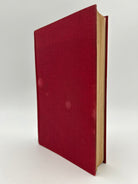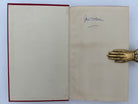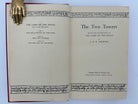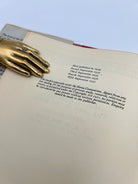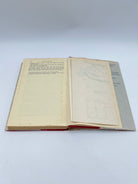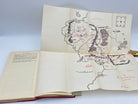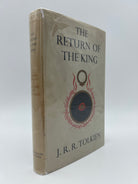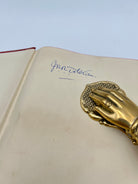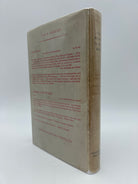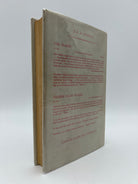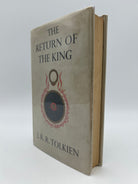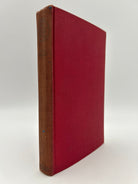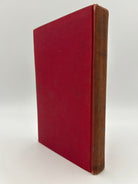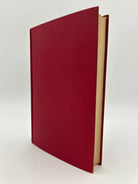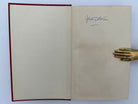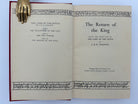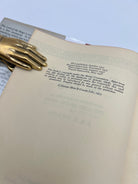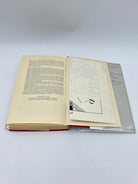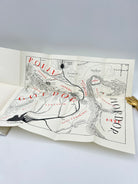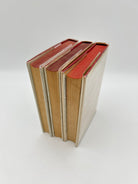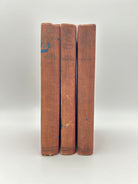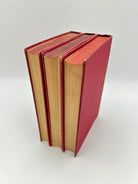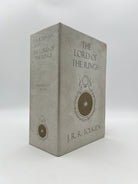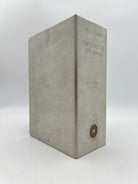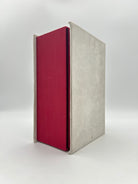The Lord of The Rings - First Edition Set - Signed
Couldn't load pickup availability
5RV, J.R.R. Tolkien. London: George Allen & Unwin Ltd. First Edition set, 7th Impression 1957, 5th Impression 1957, 4th Impression 1958. SIGNED in ballpoint pen for a student. Extremely RARE to have all 3 books signed by Tolkien. Typically it will just be one of the volumes in a set signed.
Notes
J.R.R. Tolkien wrote The Lord of the Rings over the span of more than a decade, beginning in 1937 after the success of The Hobbit and continuing through the 1940s, much of it during the turmoil of World War II. Originally conceived as a sequel to The Hobbit, the story grew into an epic of mythological depth, influenced by Tolkien’s love of ancient languages, Norse and Anglo-Saxon lore, and his devout Catholic faith. He painstakingly crafted the vast world of Middle-earth, complete with its own languages, histories, and cultures, weaving themes of friendship, sacrifice, and the corrupting power of evil into the narrative. Tolkien often wrote in longhand, revising repeatedly, and shared drafts with his close friend C.S. Lewis and the literary group known as the Inklings. His dedication to detail and linguistic invention set The Lord of the Rings apart as a monumental work in fantasy literature.
The Lord of the Rings is a trilogy composed of three volumes—The Fellowship of the Ring, The Two Towers, and The Return of the King—each chronicling the epic journey of Frodo Baggins and his companions as they seek to destroy the One Ring and defeat the dark lord Sauron. Set in the richly imagined world of Middle-earth, the books blend high adventure, deep moral themes, and intricate lore, creating a tapestry of ancient myths, heroic quests, and timeless struggles between good and evil. With its wide cast of characters—hobbits, elves, dwarves, men, and wizards—the series explores themes of friendship, courage, temptation, and hope. Tolkien’s masterful world-building, lyrical prose, and invented languages elevate the story into a foundational work of modern fantasy, deeply loved by generations of readers.
The second revised edition of The Lord of the Rings printed in the UK was published by George Allen & Unwin in 1966, following the earlier 1965 revisions made in response to the unauthorized Ace Books edition in the U.S. Tolkien took this opportunity to make more thorough corrections and refinements, especially to align the timeline across the books, clarify linguistic inconsistencies, and improve the appendices. He worked with his publisher to ensure this version would reflect his intentions more accurately than the first edition, which had typographical errors and continuity issues. This UK second edition became the authoritative version for many subsequent printings and was crucial in preserving the integrity of Tolkien’s legendarium as readership and scholarly interest in his work rapidly expanded.
J.R.R. Tolkien was a respected professor and philologist who taught at Oxford University for most of his academic career, first as the Rawlinson and Bosworth Professor of Anglo-Saxon (1925–1945), and later as the Merton Professor of English Language and Literature (1945–1959). He specialized in Old and Middle English, particularly in works like Beowulf, and was deeply invested in the study of ancient Germanic and Norse languages and mythologies. His lectures were known for their depth and linguistic insight, though some students found his delivery to be quiet and scholarly rather than theatrical. However, those with a strong interest in language often found him inspiring and brilliant, admiring his passion for the roots and evolution of English. Many students remembered him as a kind, meticulous, and slightly eccentric academic, and his deep love for language clearly informed both his teaching and his fiction writing.
J.R.R. Tolkien did not frequently sign books for his students. While courteous when asked respectfully, he was a private and somewhat shy individual, and did not view himself as a celebrity author, especially during his early years of teaching. As The Lord of the Rings gained popularity in the 1950s and 60s, he received increasing numbers of autograph requests—from fans, collectors, and students alike. While he occasionally signed books for students or inscribed them as gifts, he grew more selective over time, very rarely signing all three. In his later years, he often declined requests unless they came through personal or academic connections.
Description
The Fellowship of The Ring: Original red cloth board binding. One inch blue paint on the right side of spine, which bleeds onto the lower lefthand corner of the front cover. Blue paint stain also on the top of the spine, overlapping with the original gilt title embossing. Slight wear on the bottom and top of spine. Some darkening fading on the spine, red ink very faded with the black being very clear. Slight foxing throughout. Signed by Tolkien in blue ballpoint pen on the first endpaper
The Two Towers: Original red cloth board binding. Seven blue paint spots on the spine. Some darkening fading on the spine as well. Very slight foxing on the end papers and throughout. Signed by Tolkien in blue ballpoint pen on the first endpaper. Jacket has tan spot on cover, overlapping with the author's printed name and a very small black spot to the bottom right of the printed title. Tan fading to the jacket spine with some wear to the top and bottom edges. Very slight wear along spine lines.
The Return of the King: Original red cloth board binding. Blue paint spot on the lower, middle, and top right corner of the spine. Some darkening fading on the spine. Very slight foxing on the end papers and throughout. Signed by Tolkien in blue ballpoint pen on the first endpaper. Jacket has small quarter inch tear on top left corner of cover. Spine has wear on top and bottom of spine, with a very small section of the bottom spine jacket paper missing. Slight wear on cover corners. Light tan coloring around spine corners.
